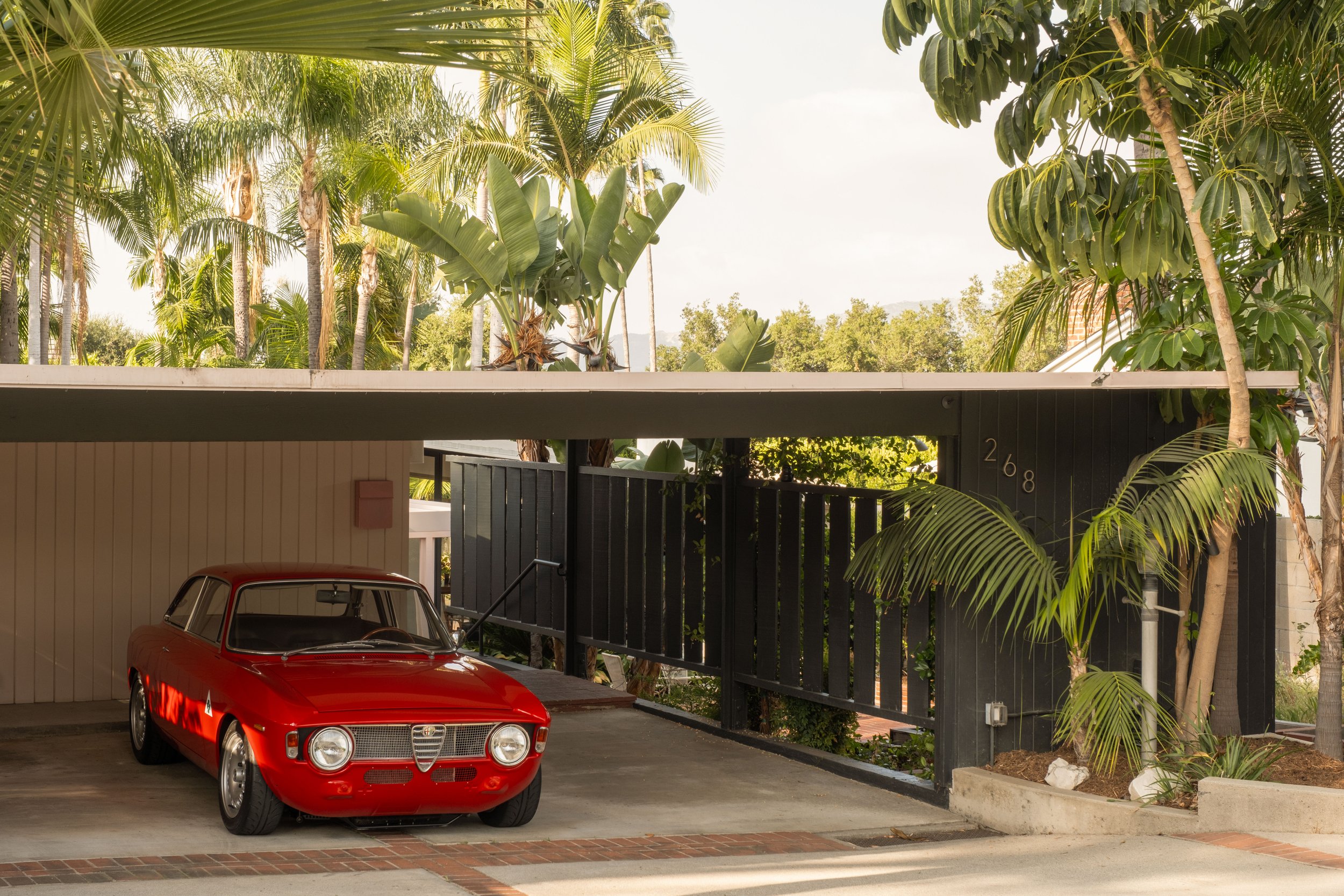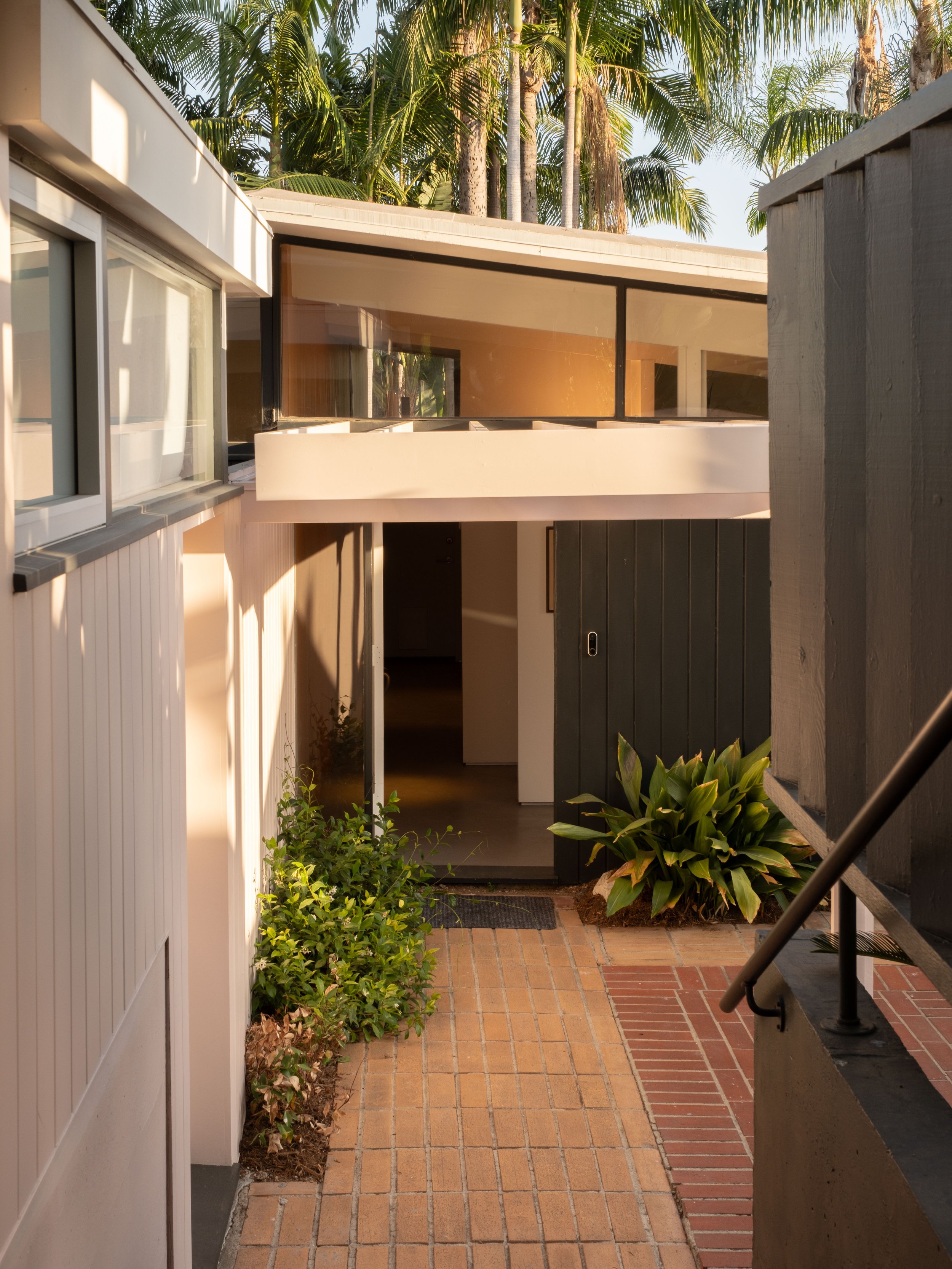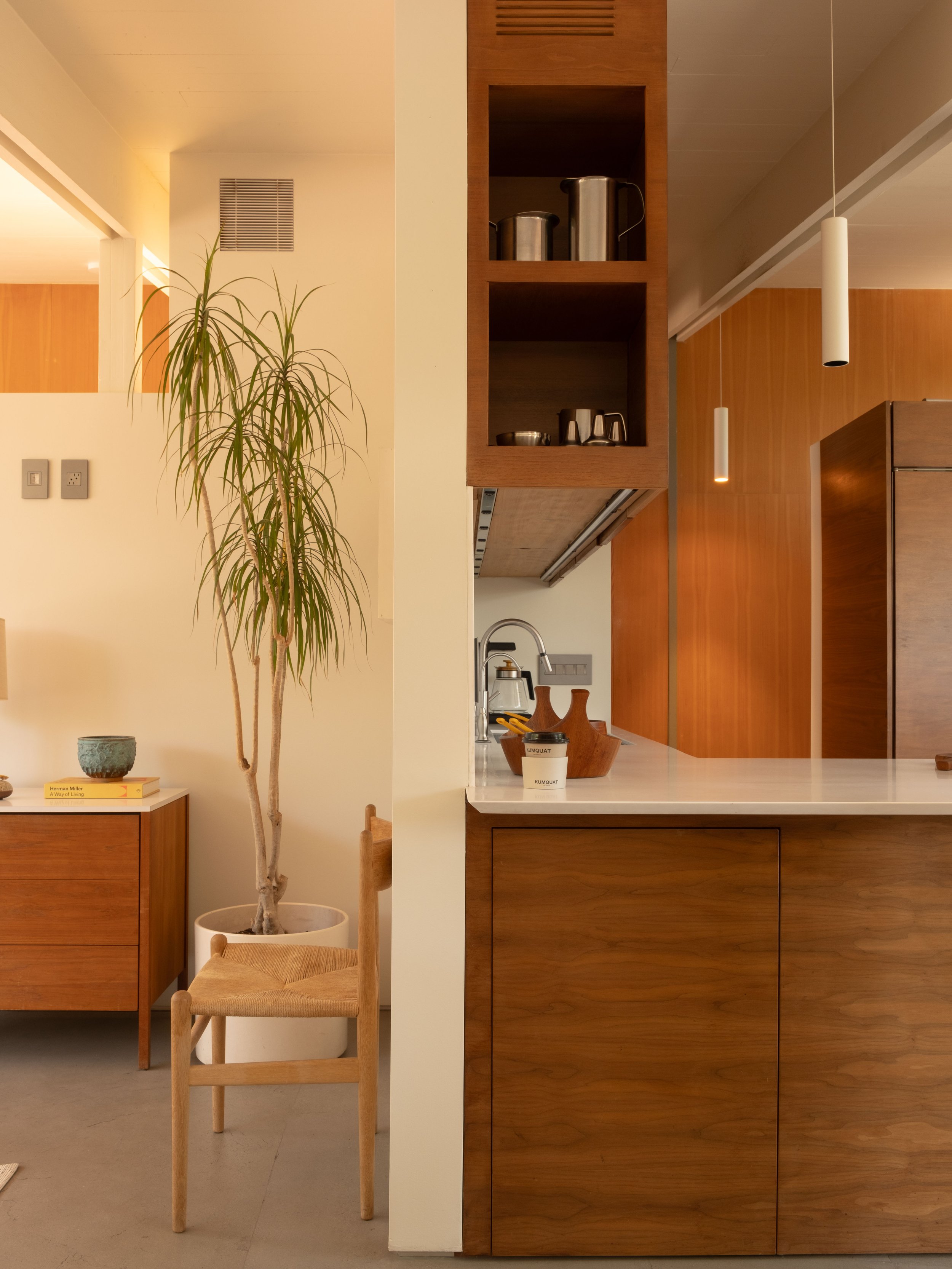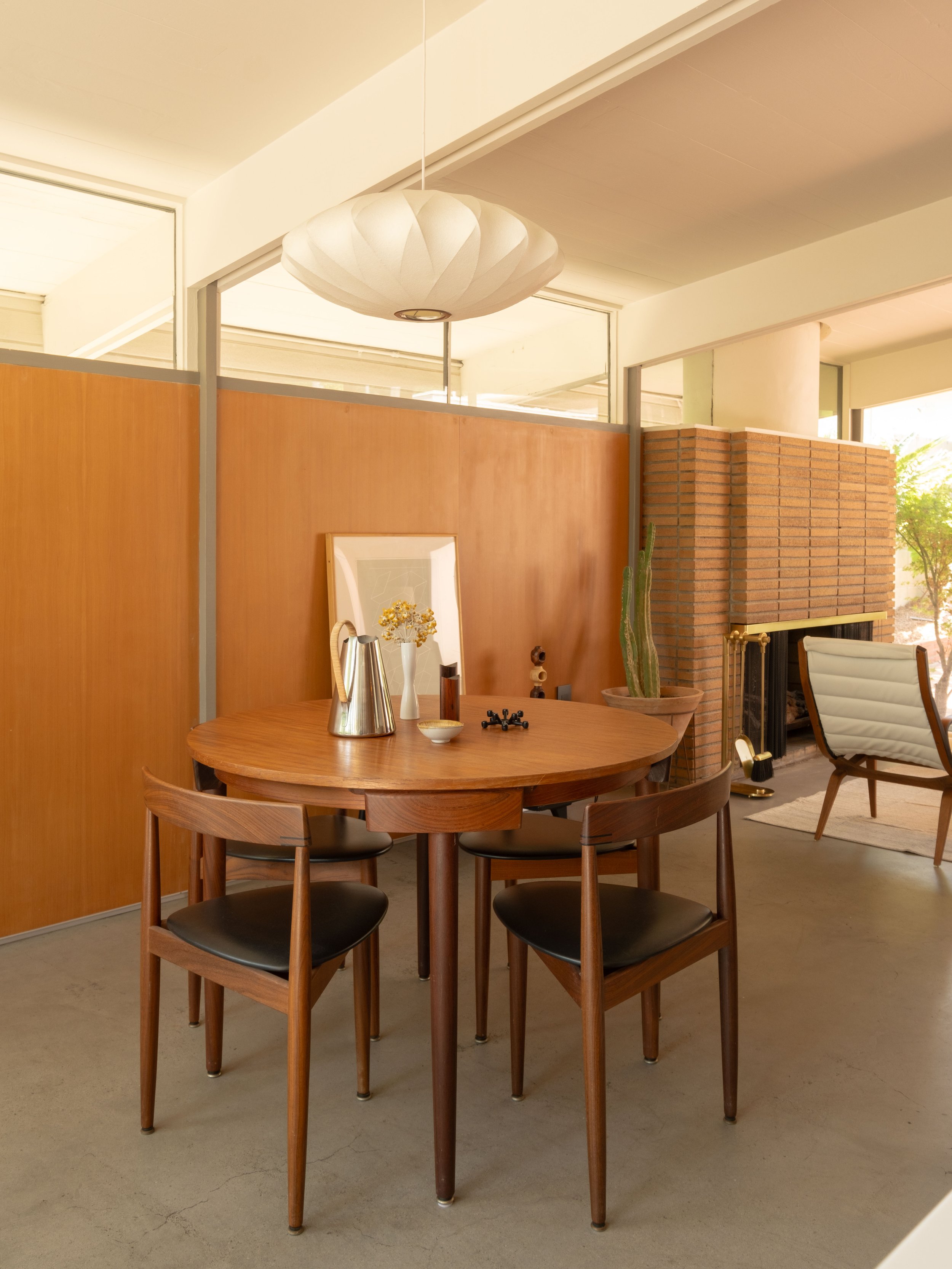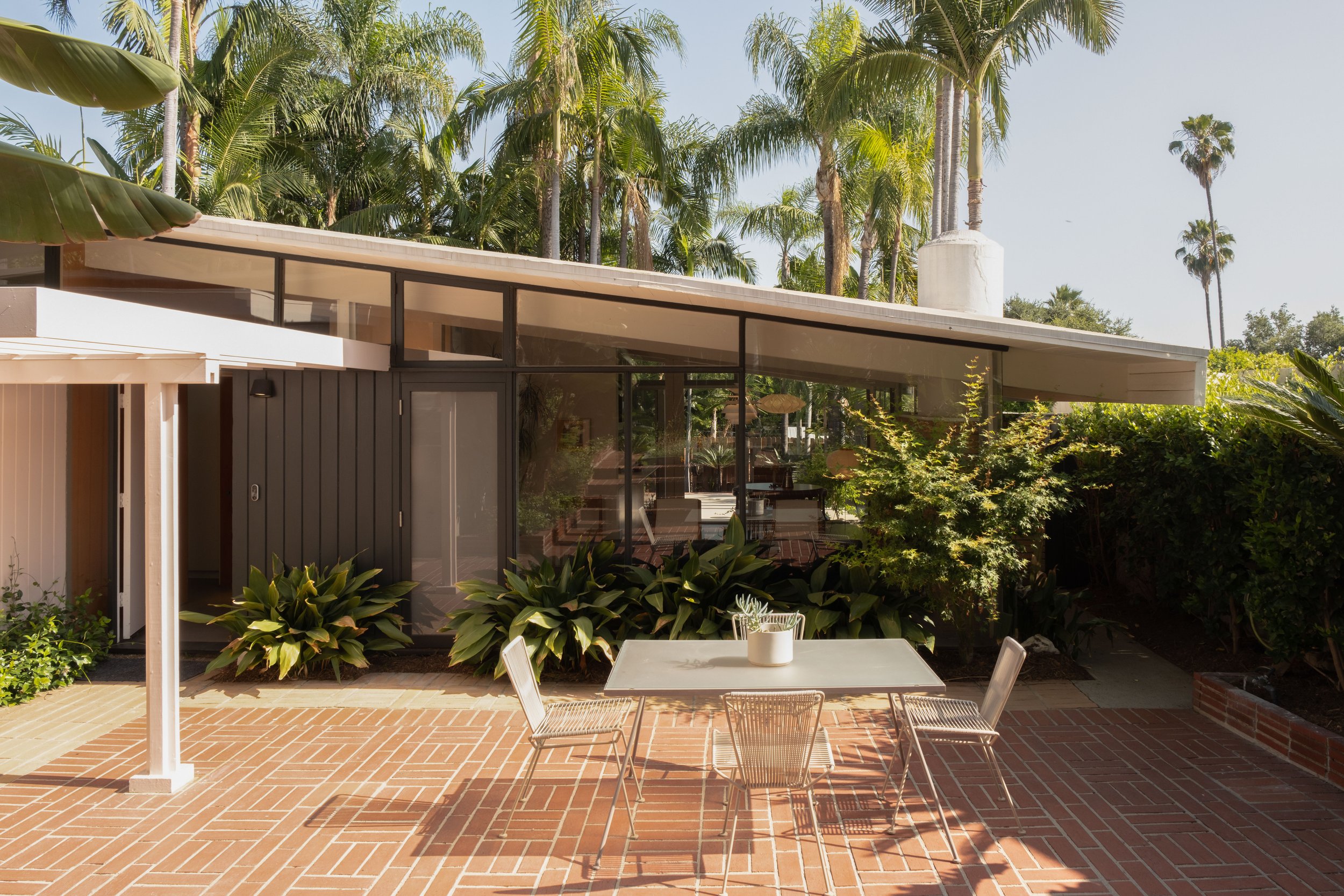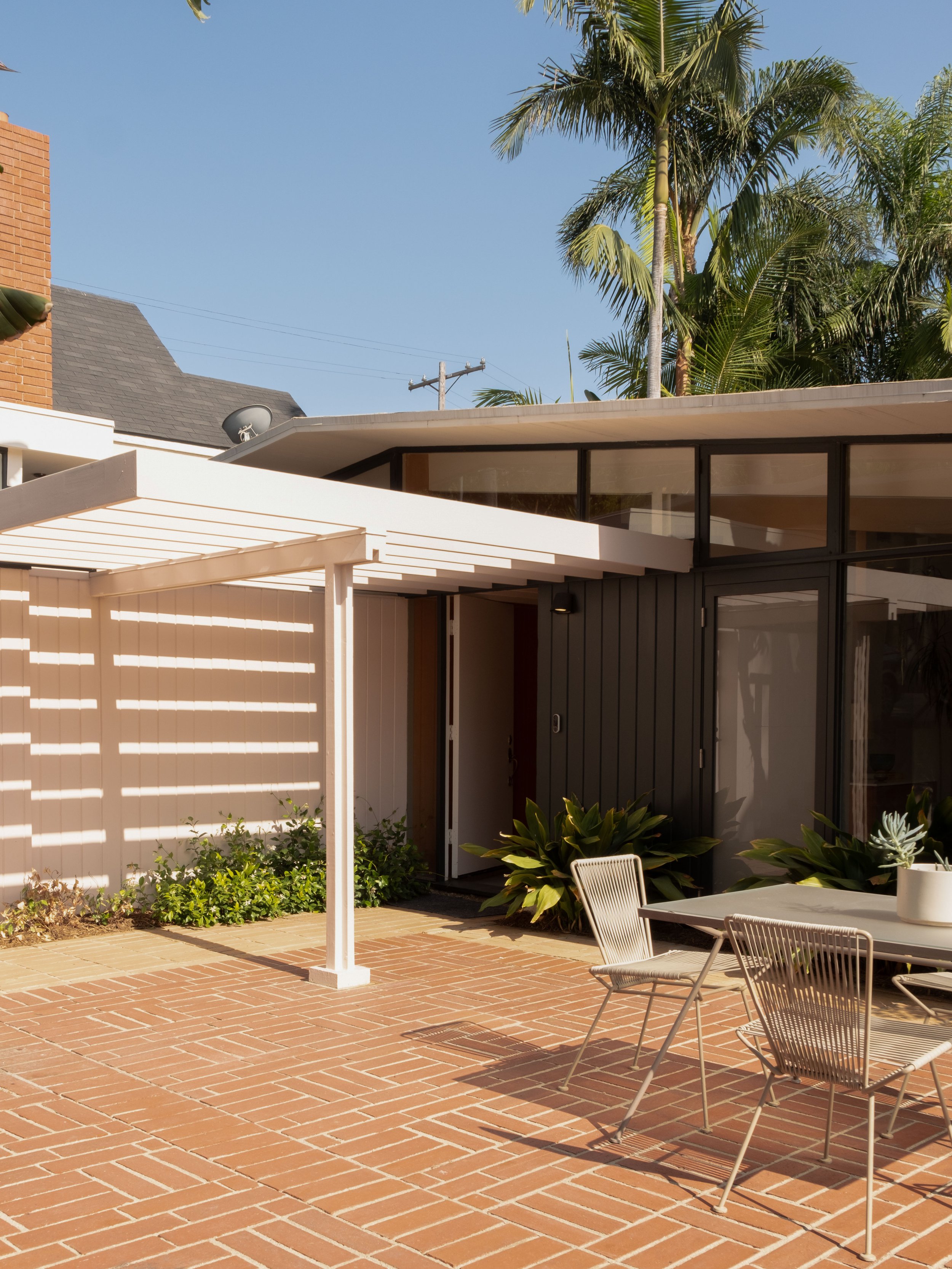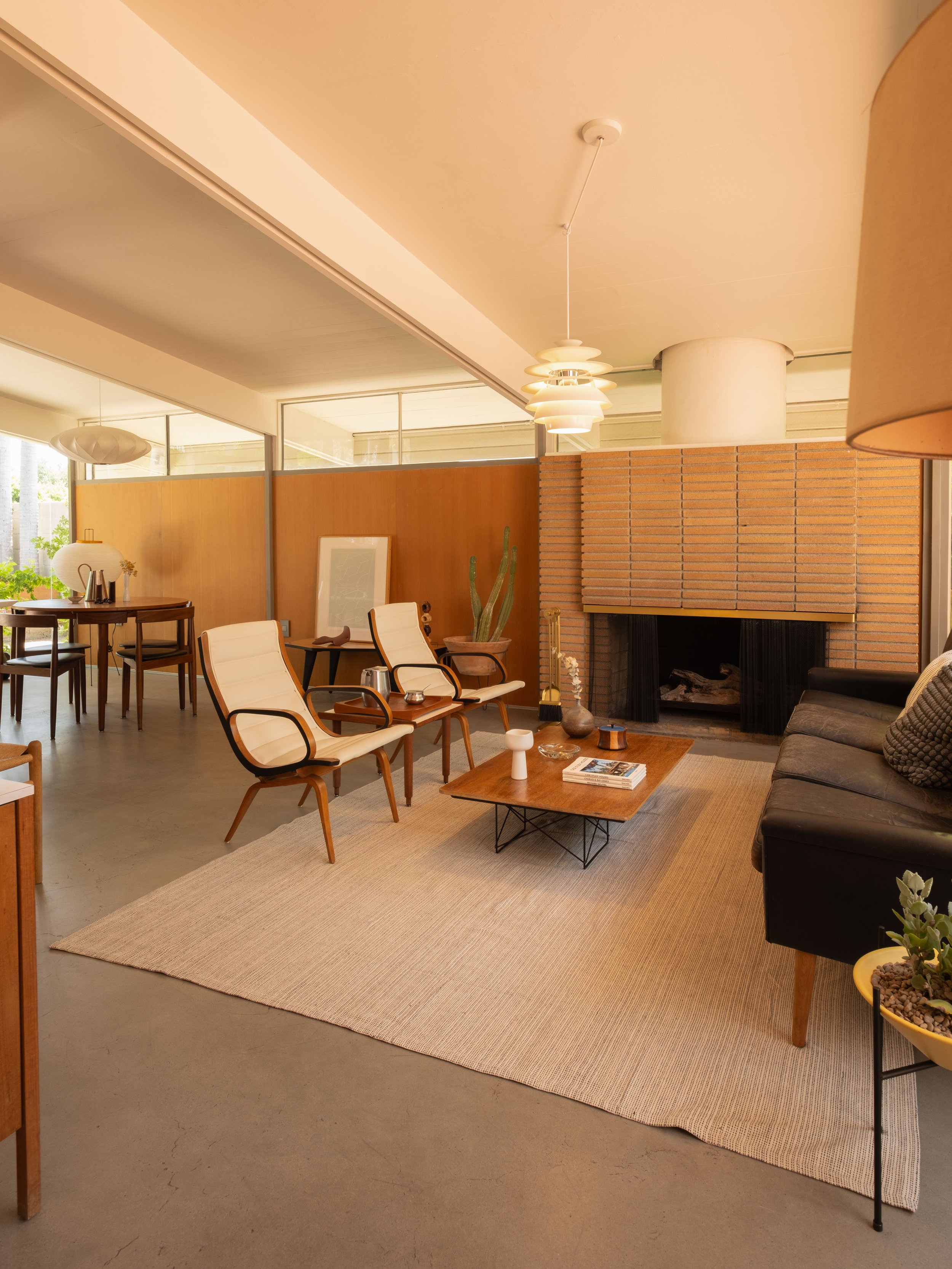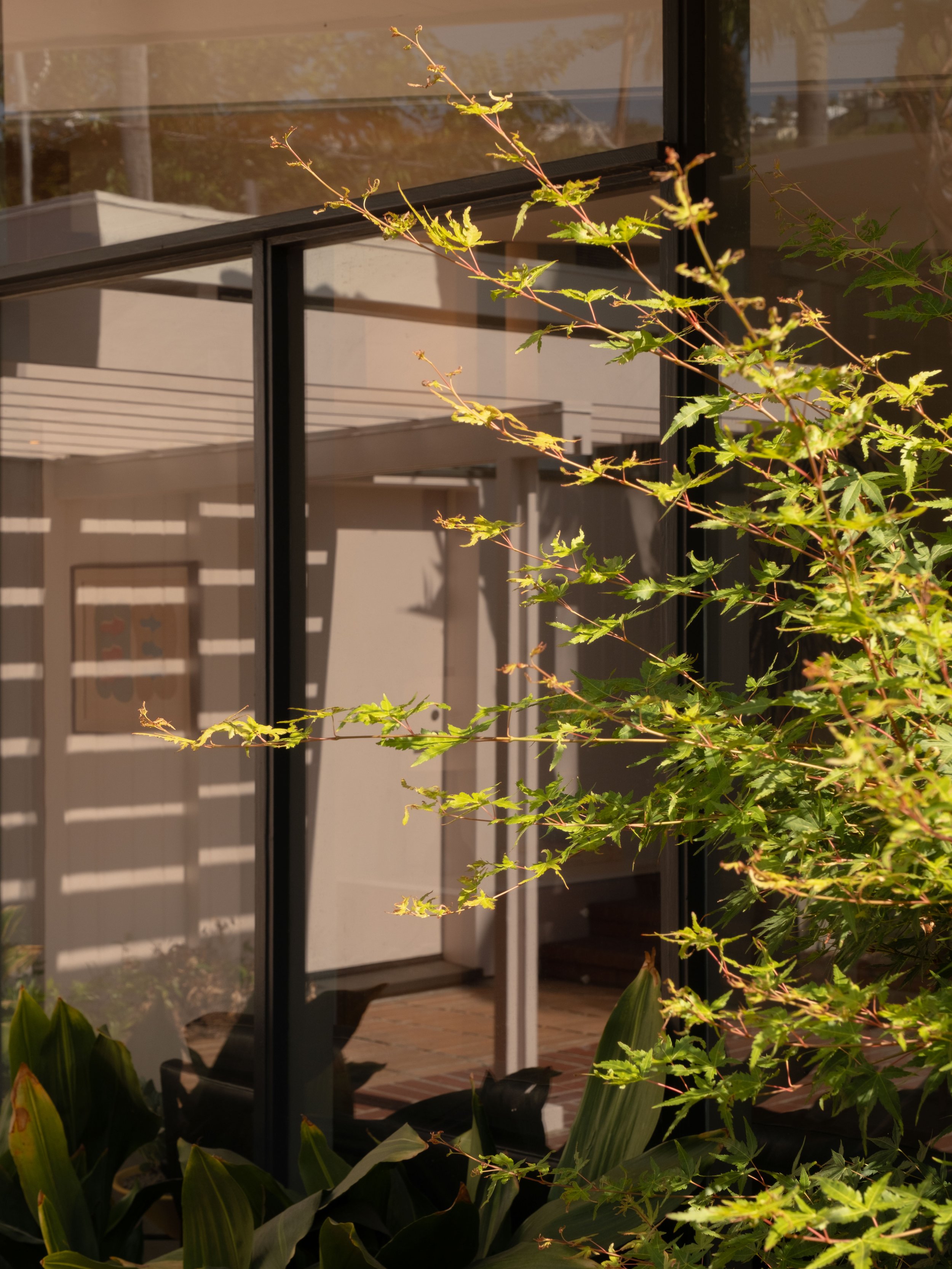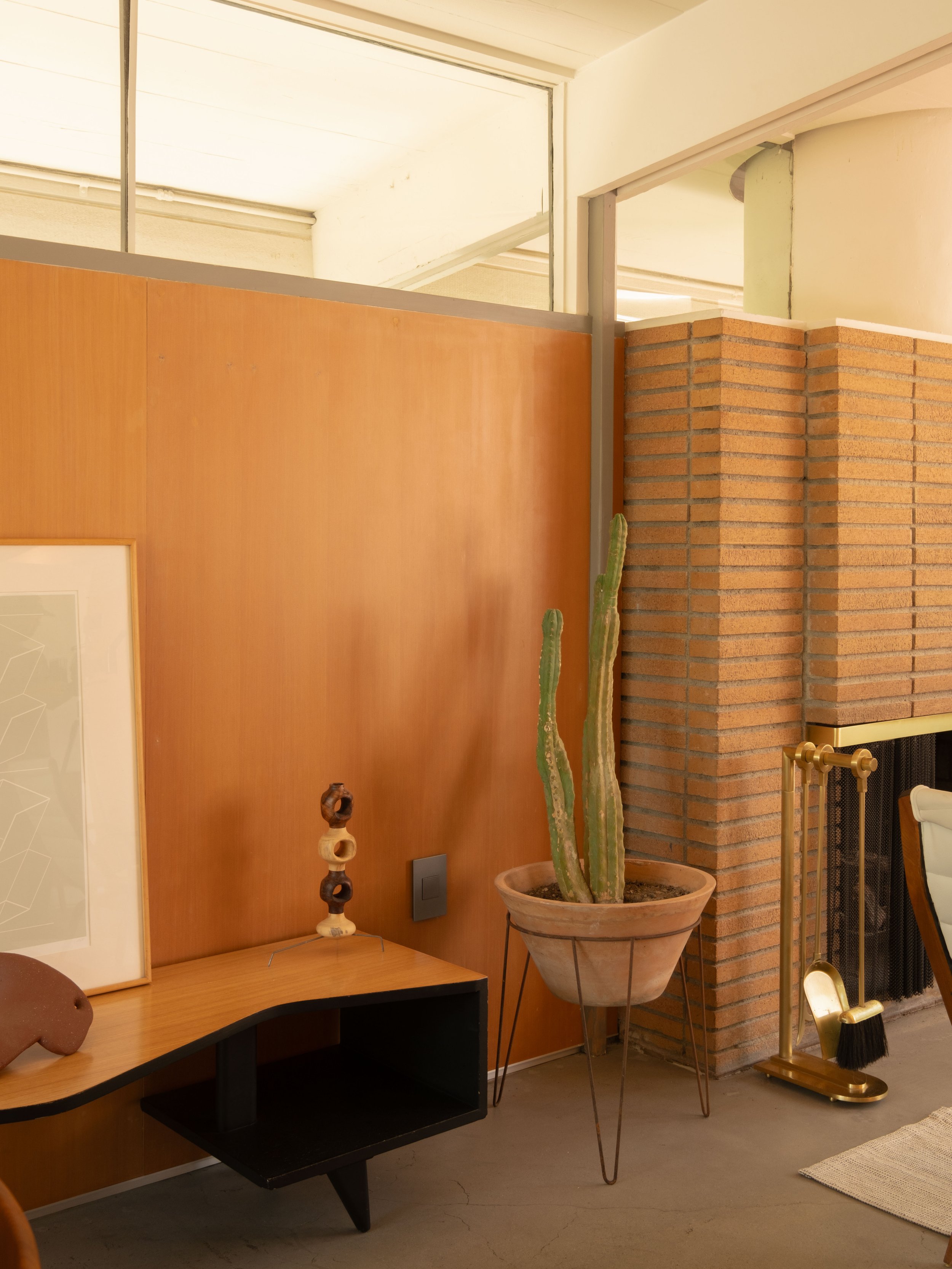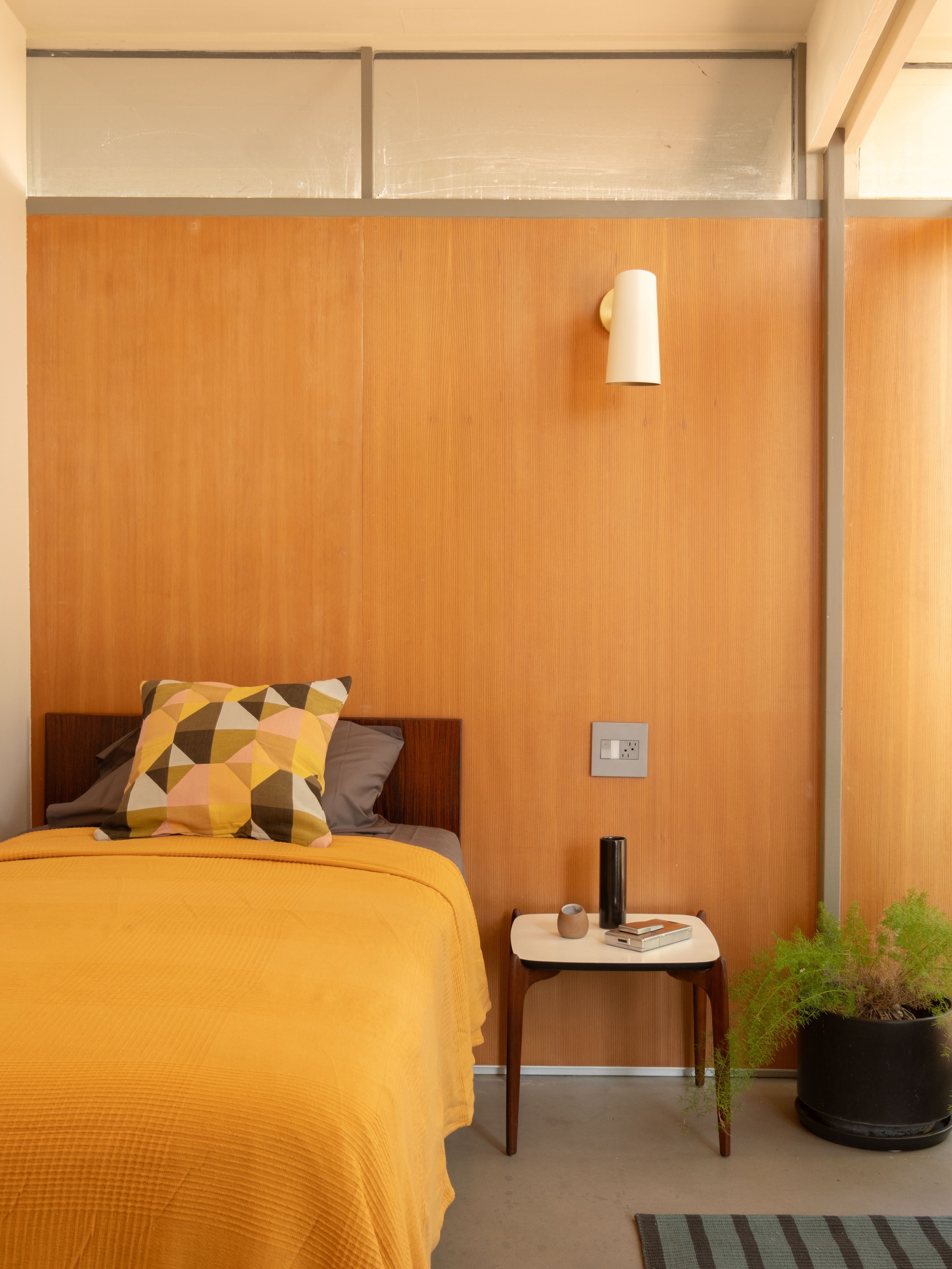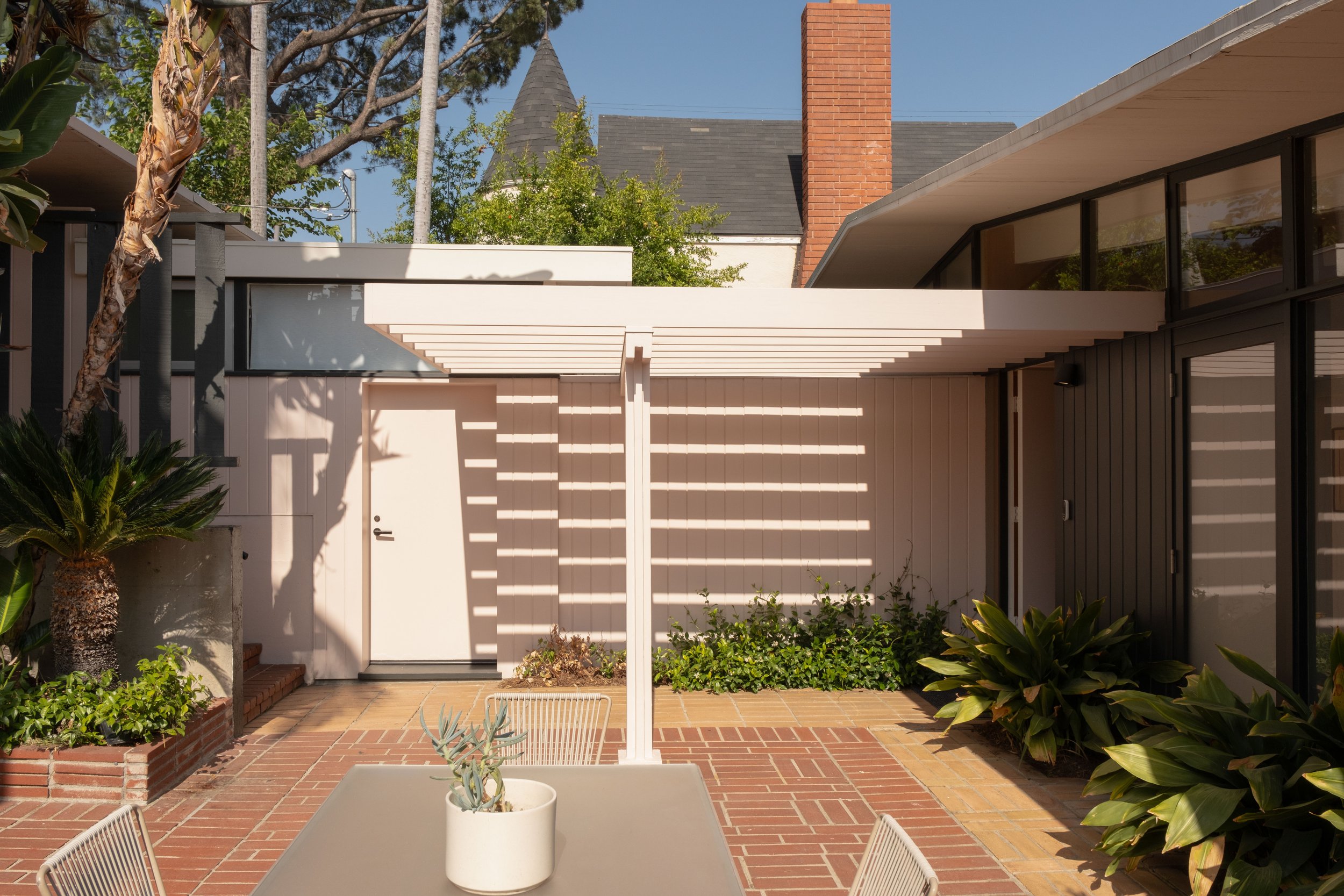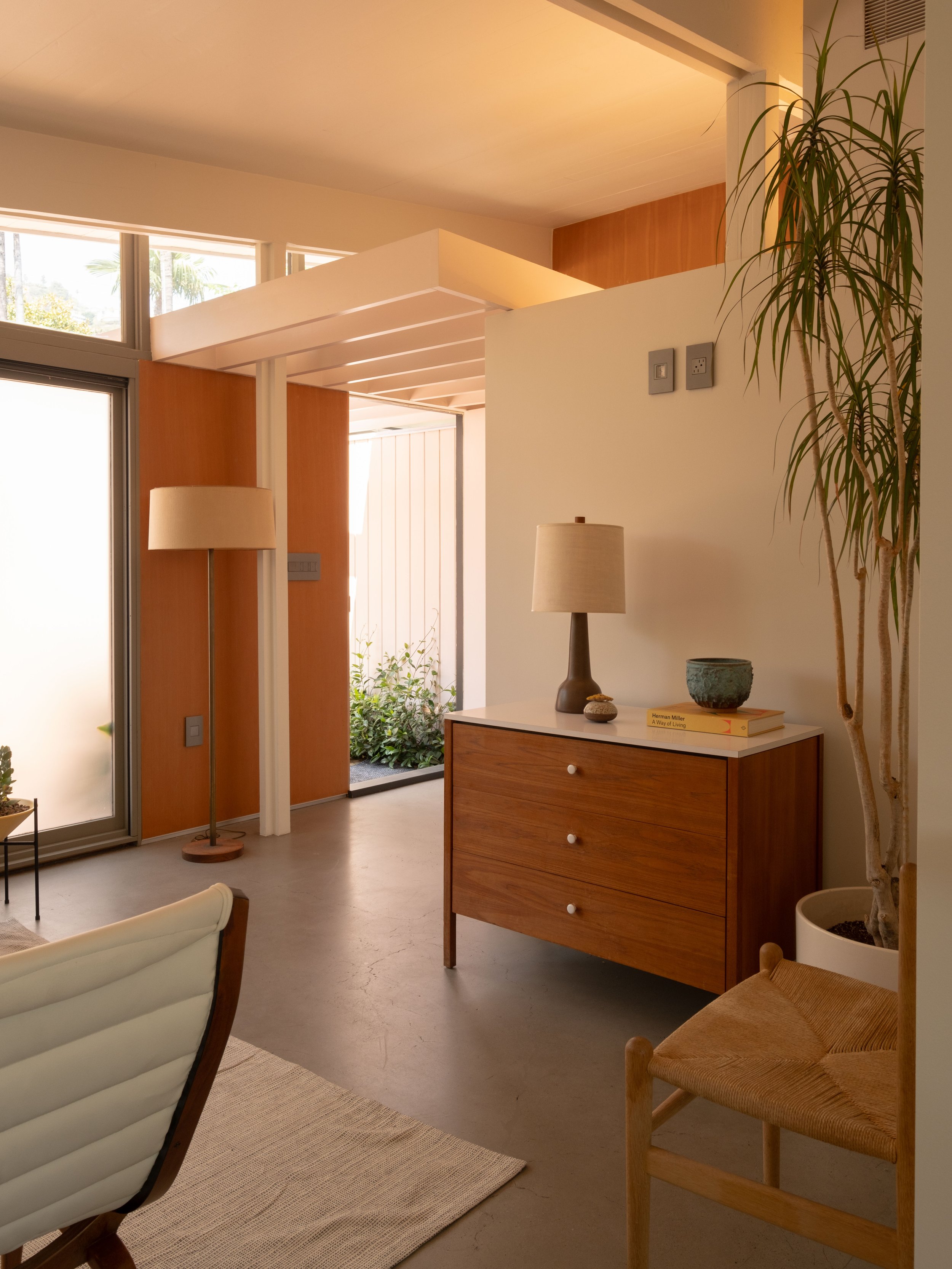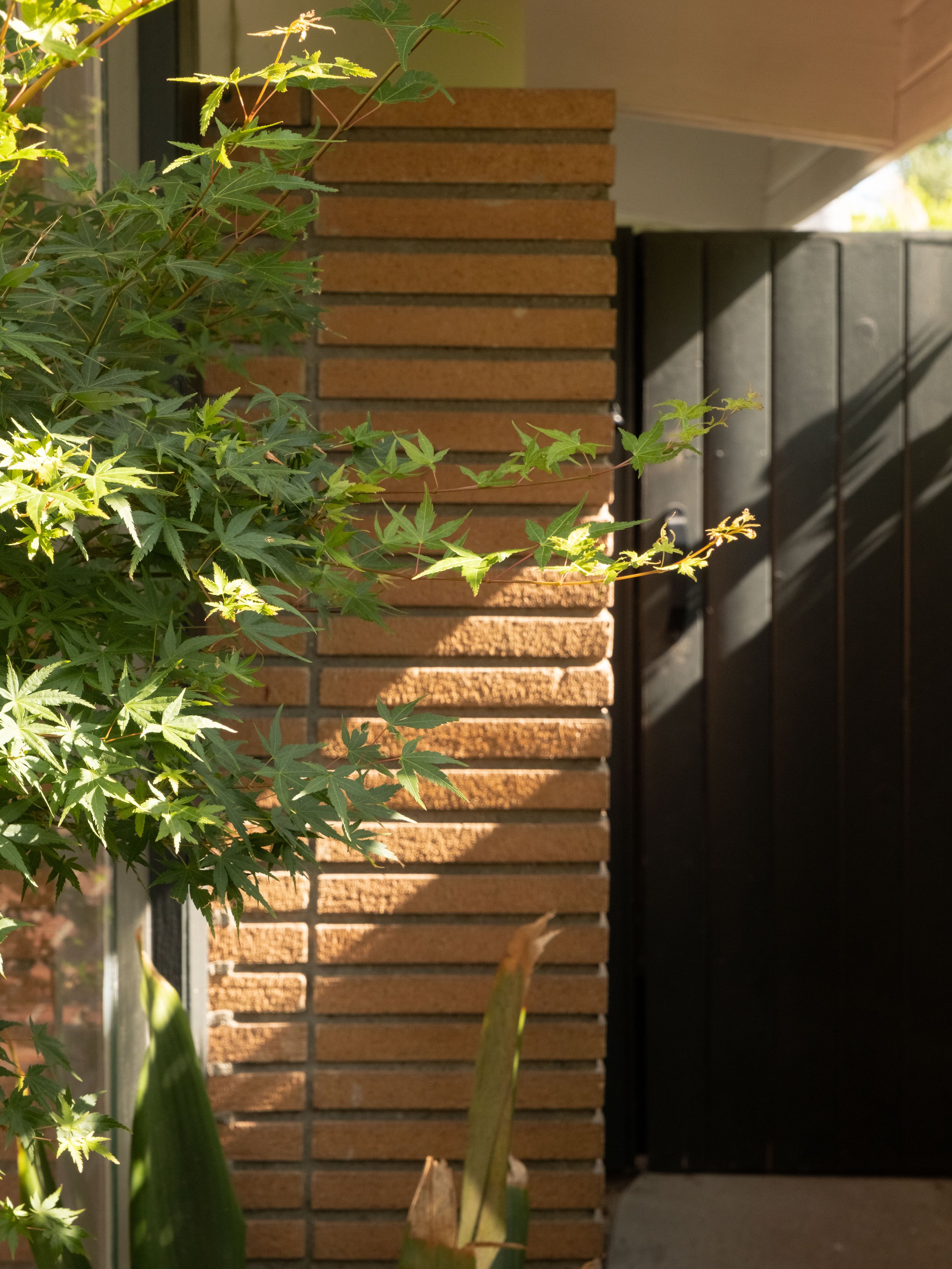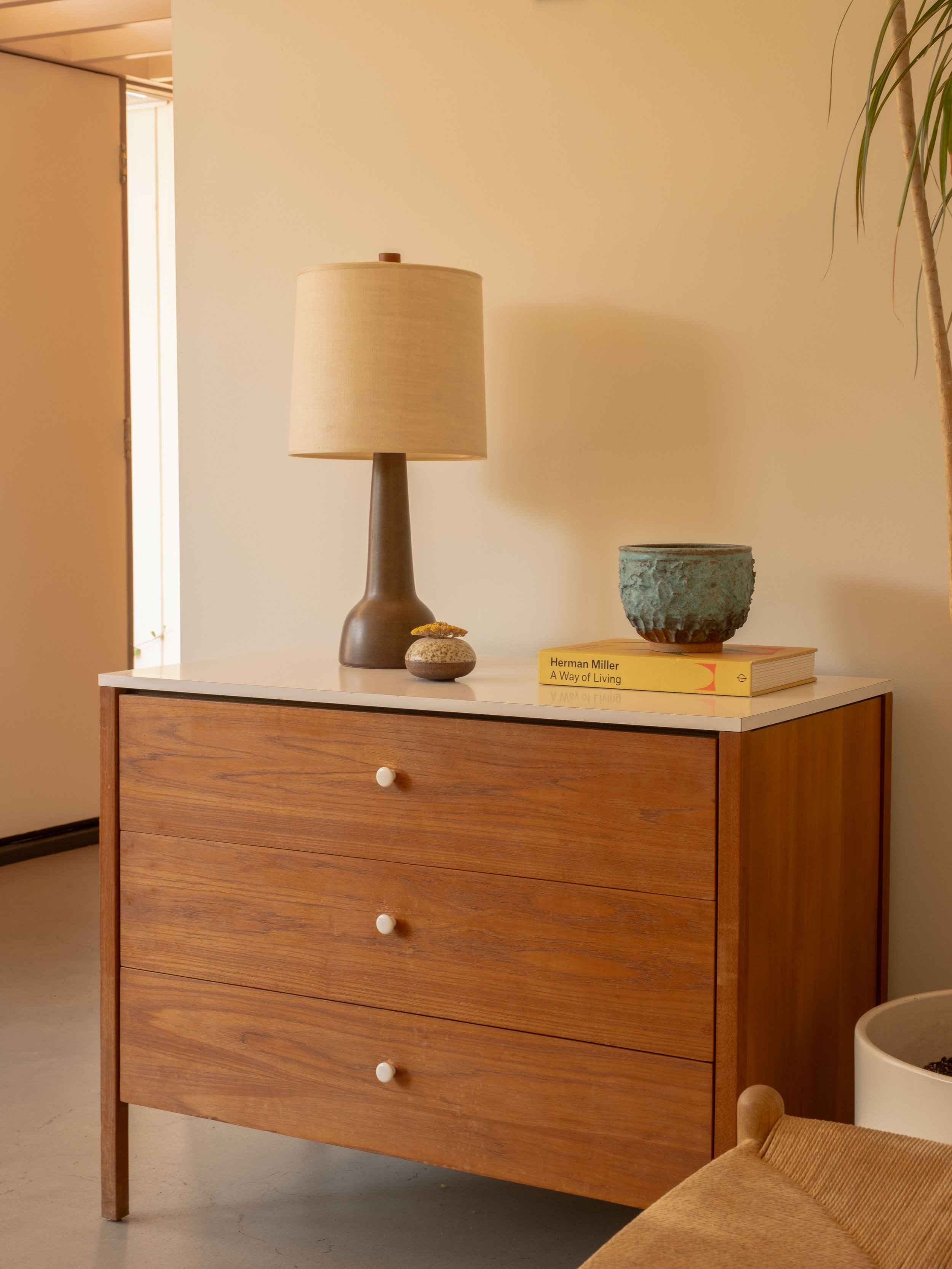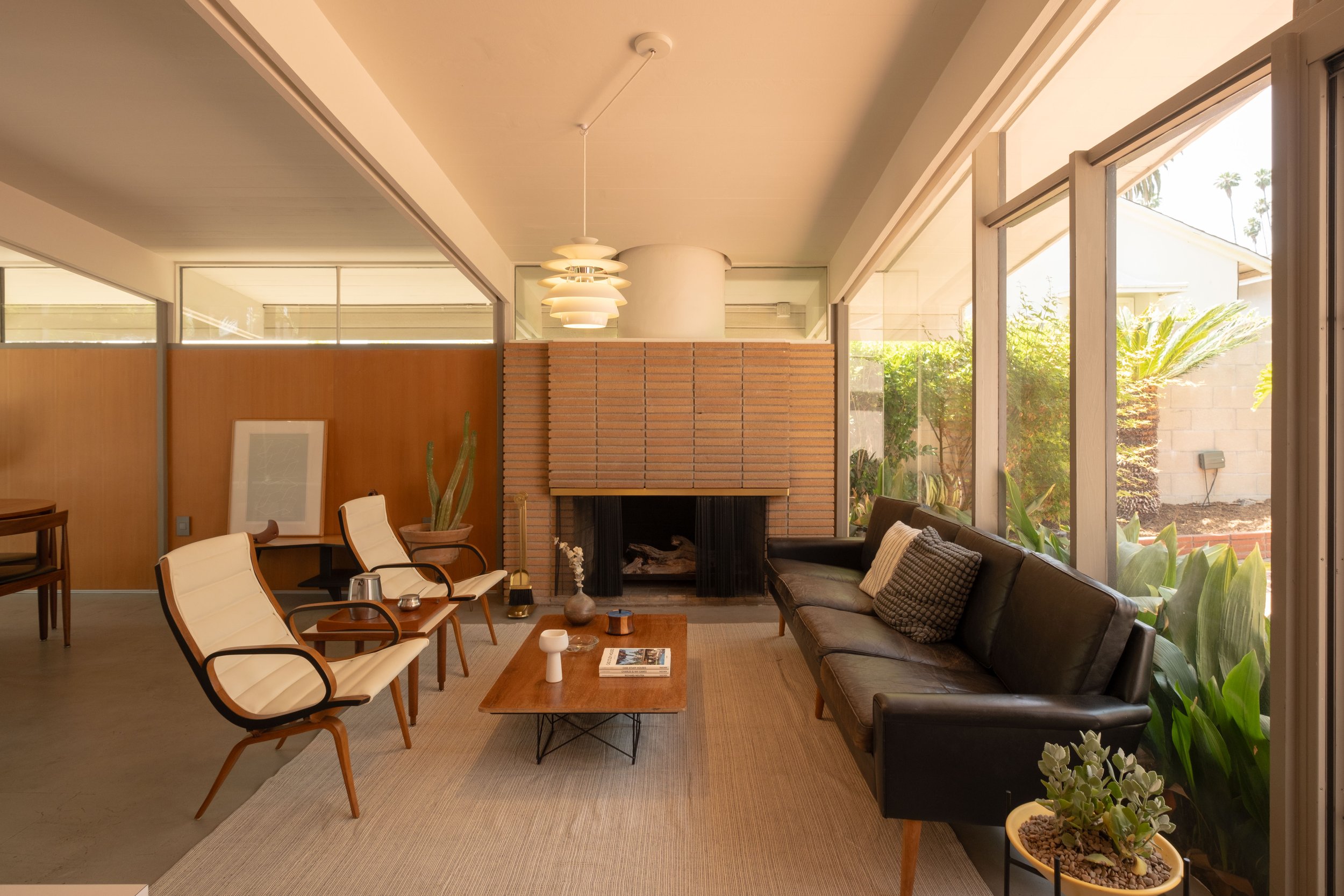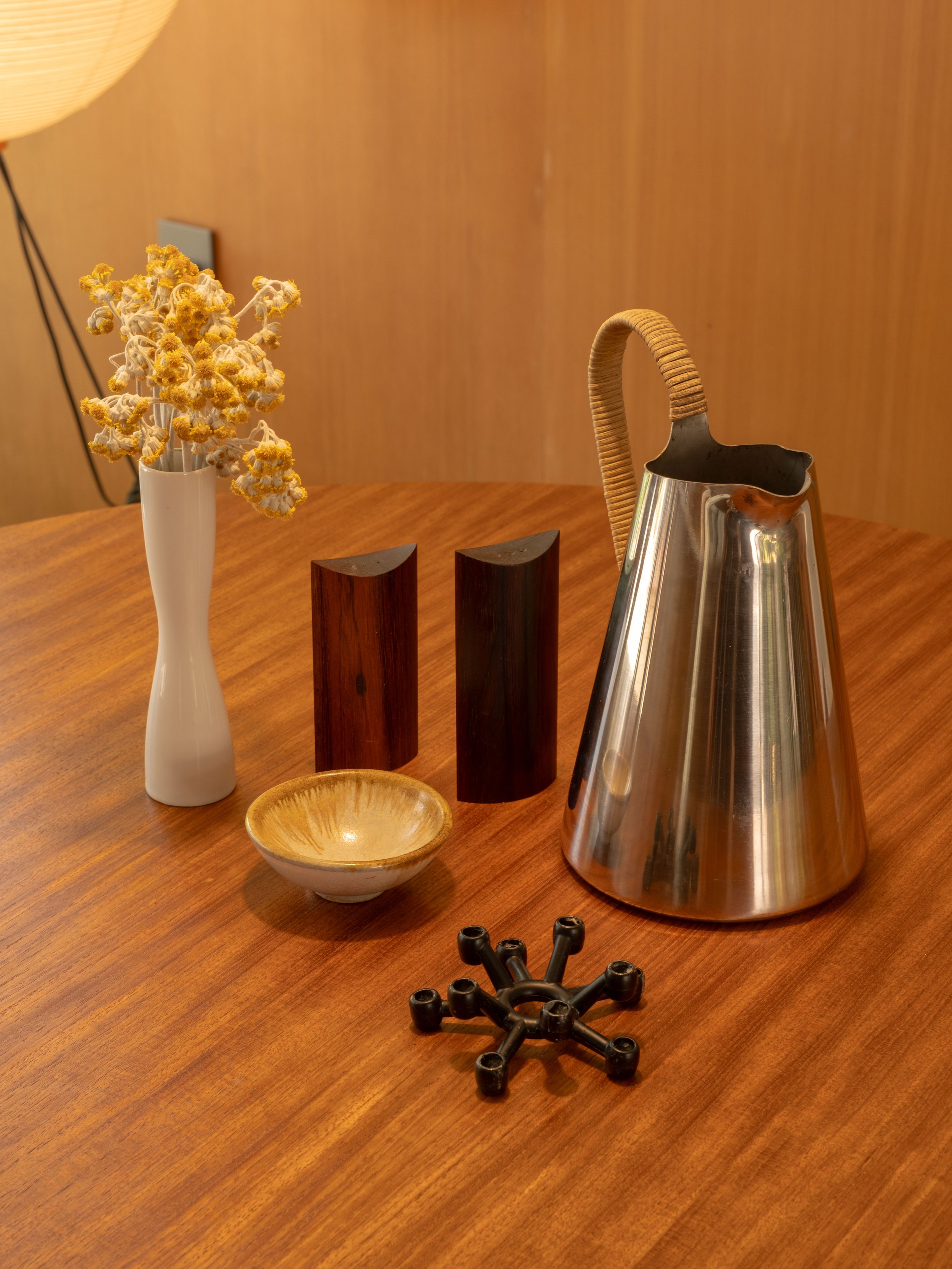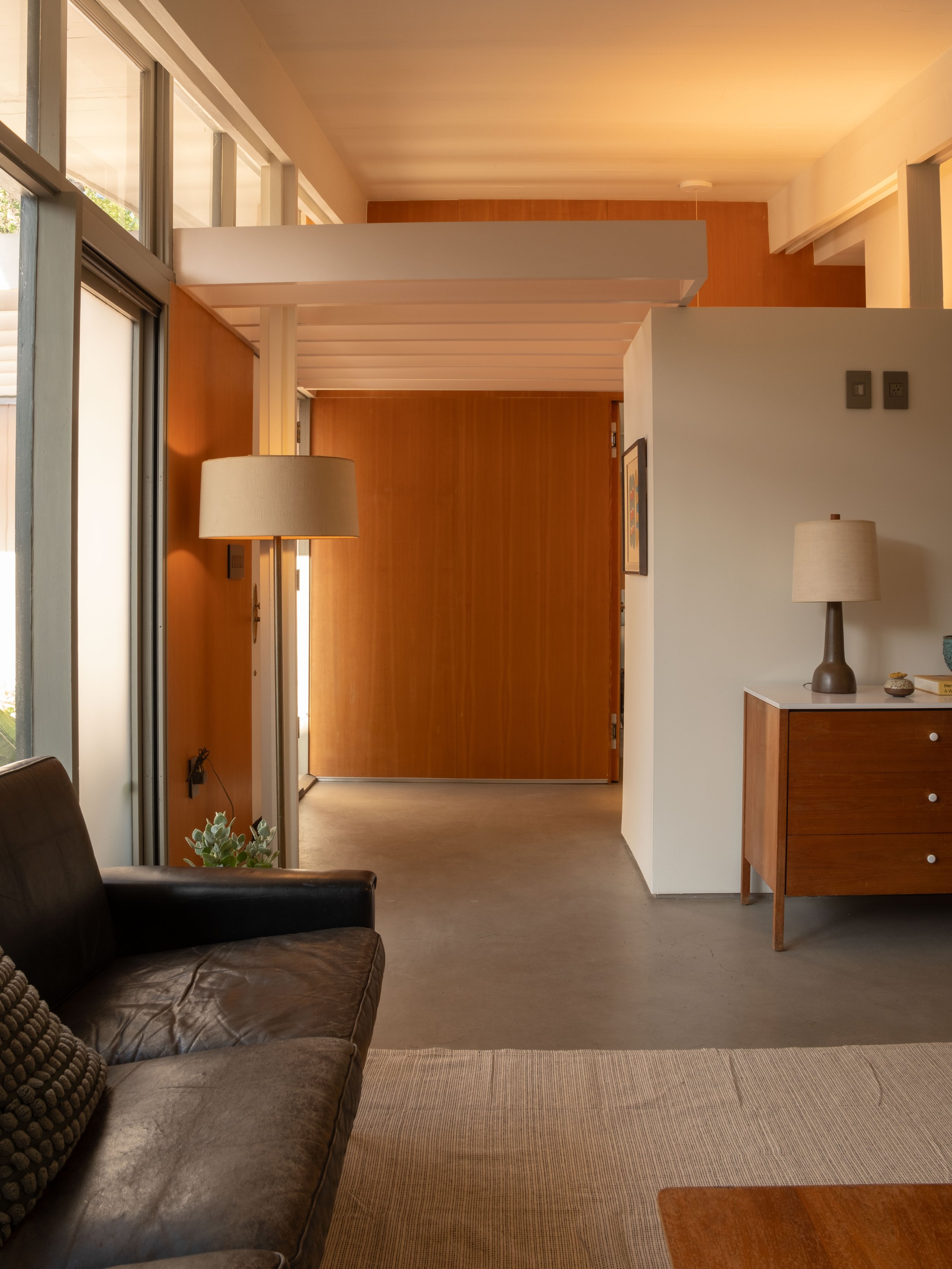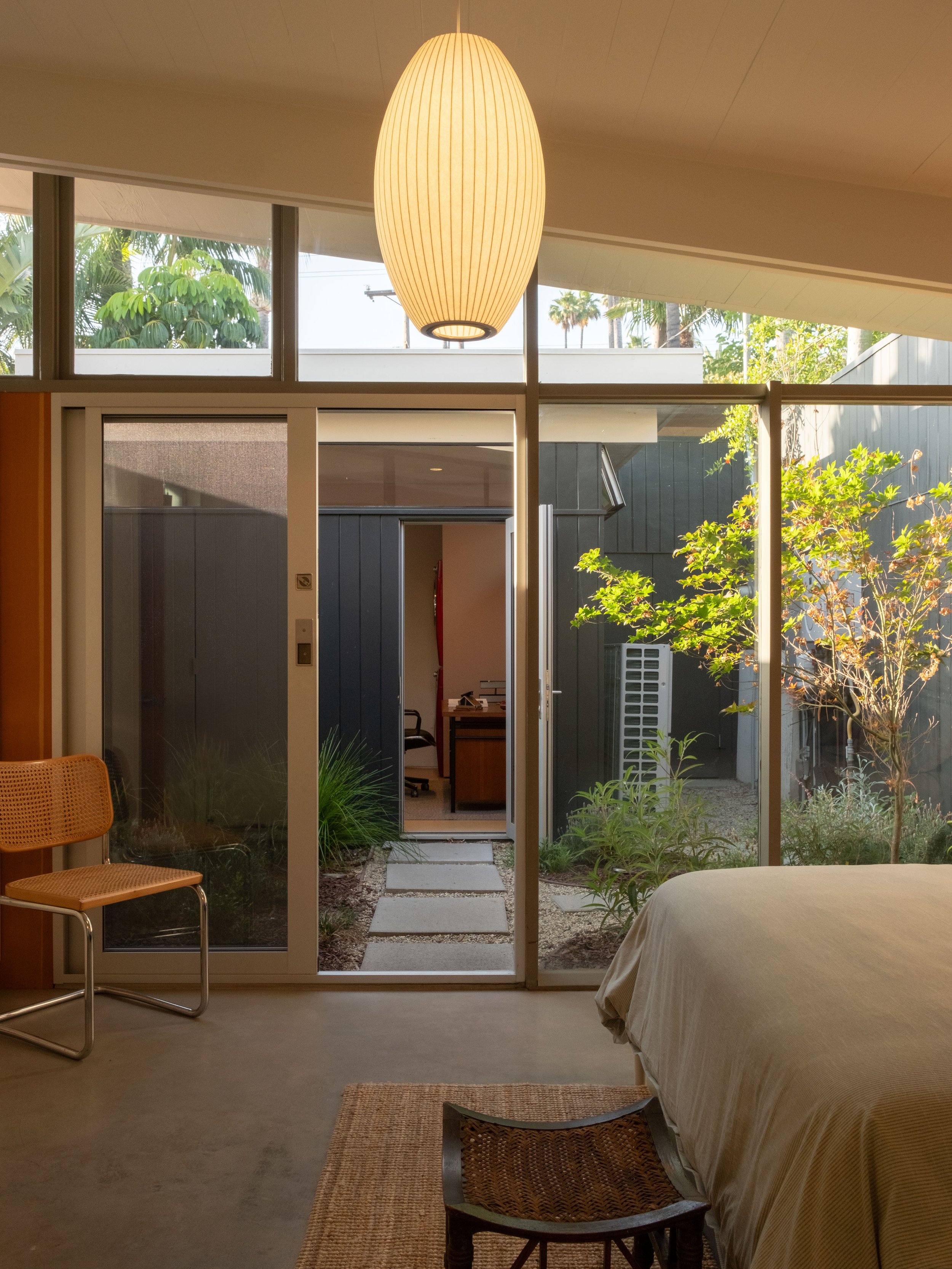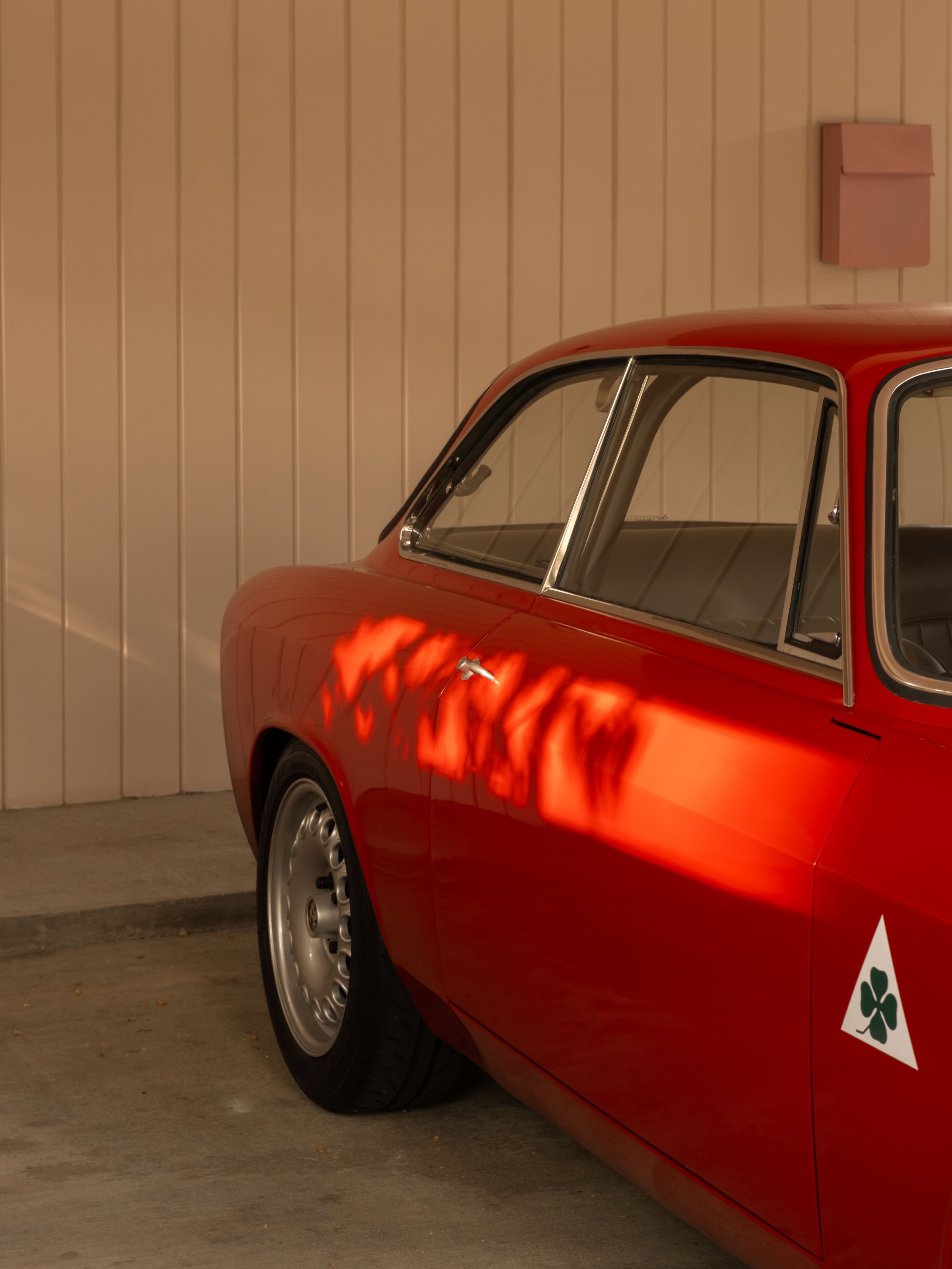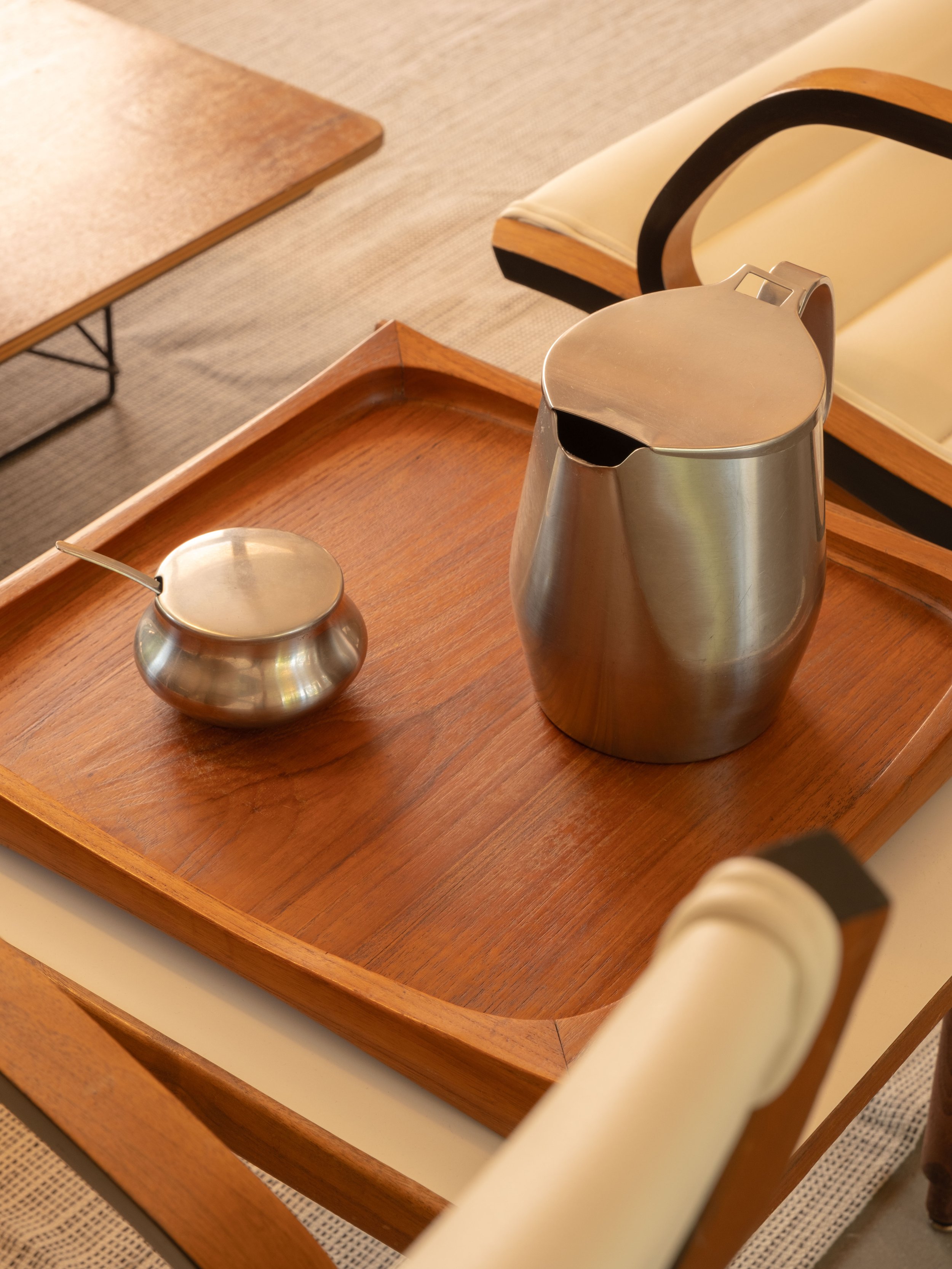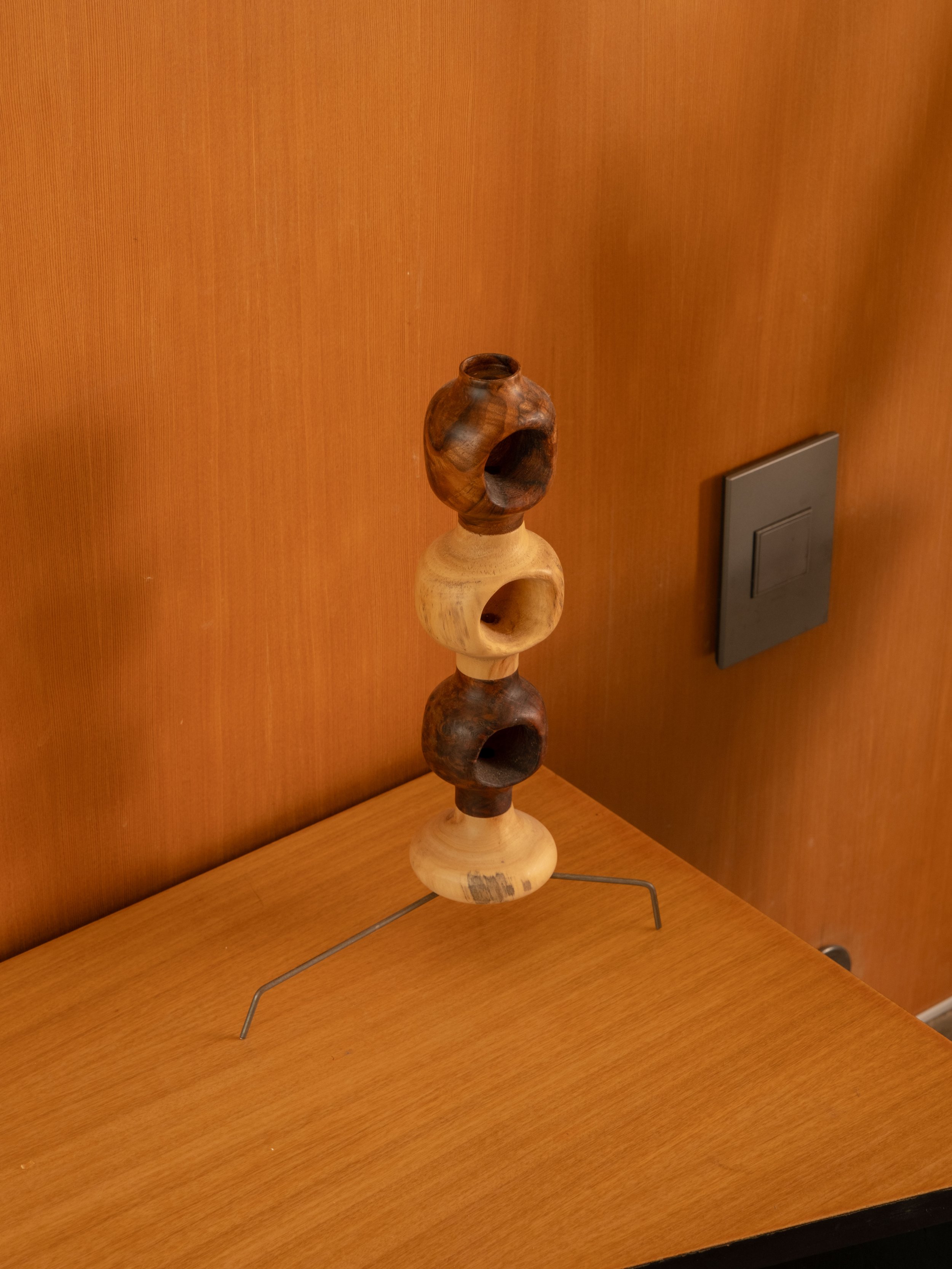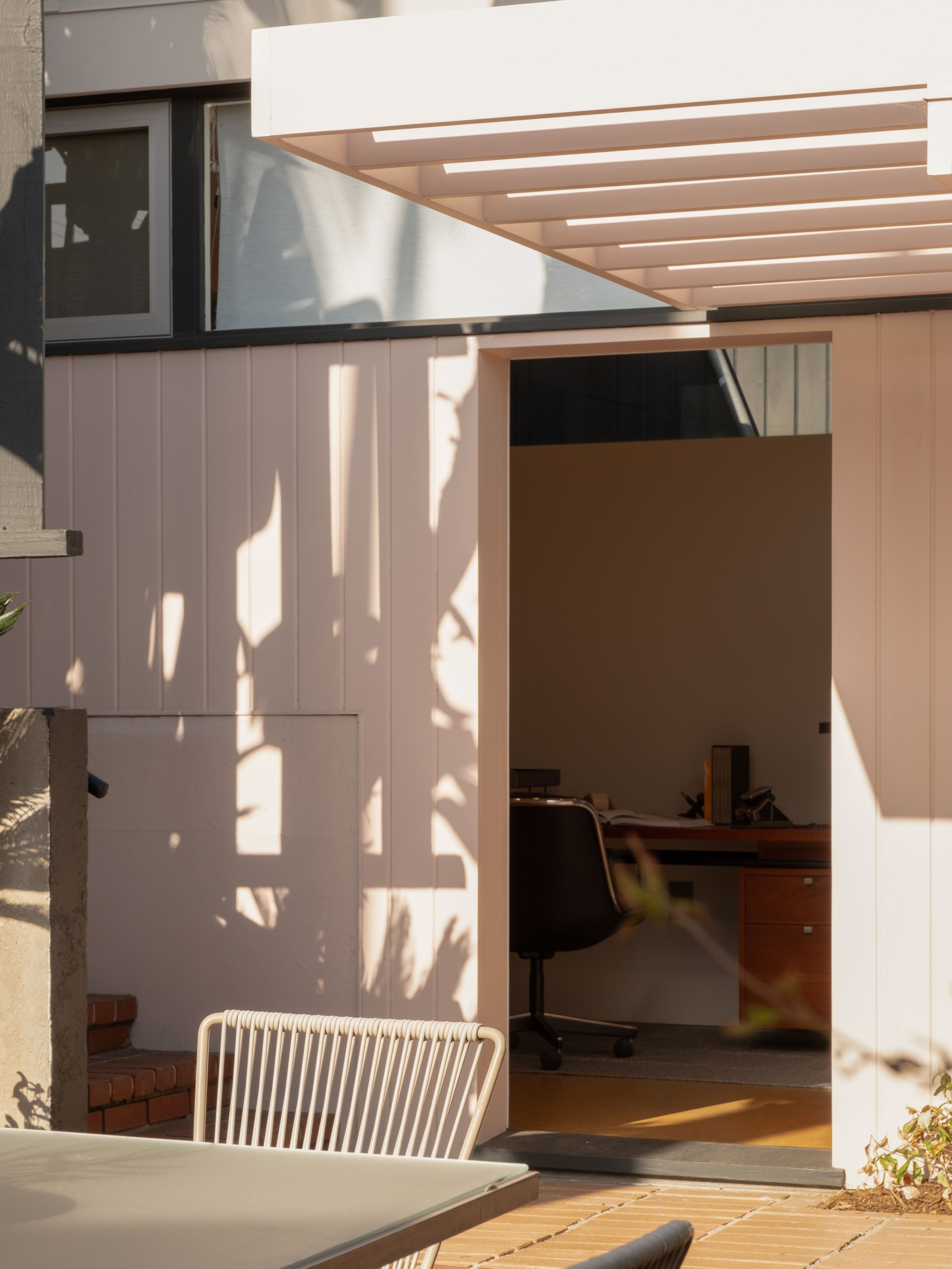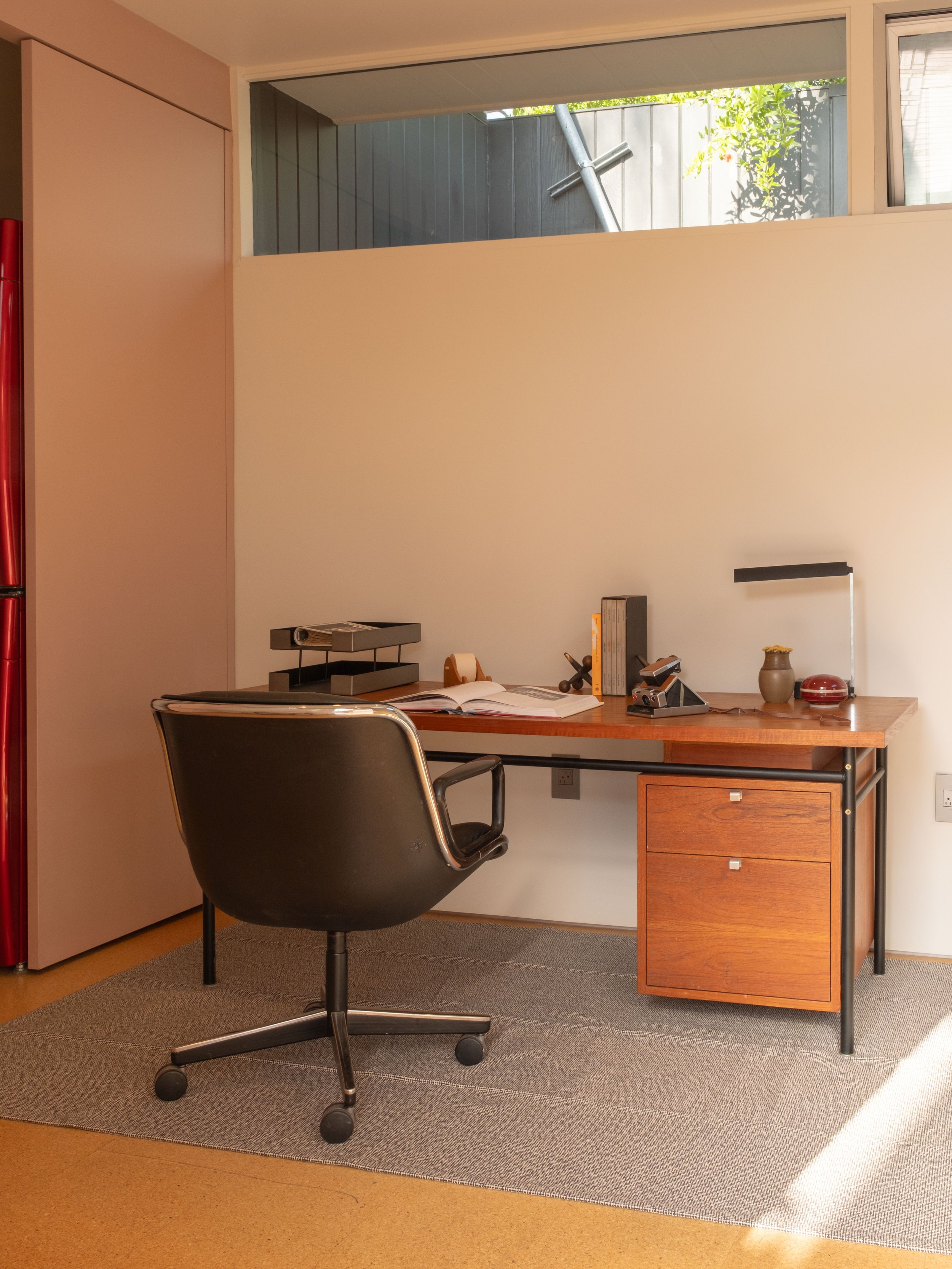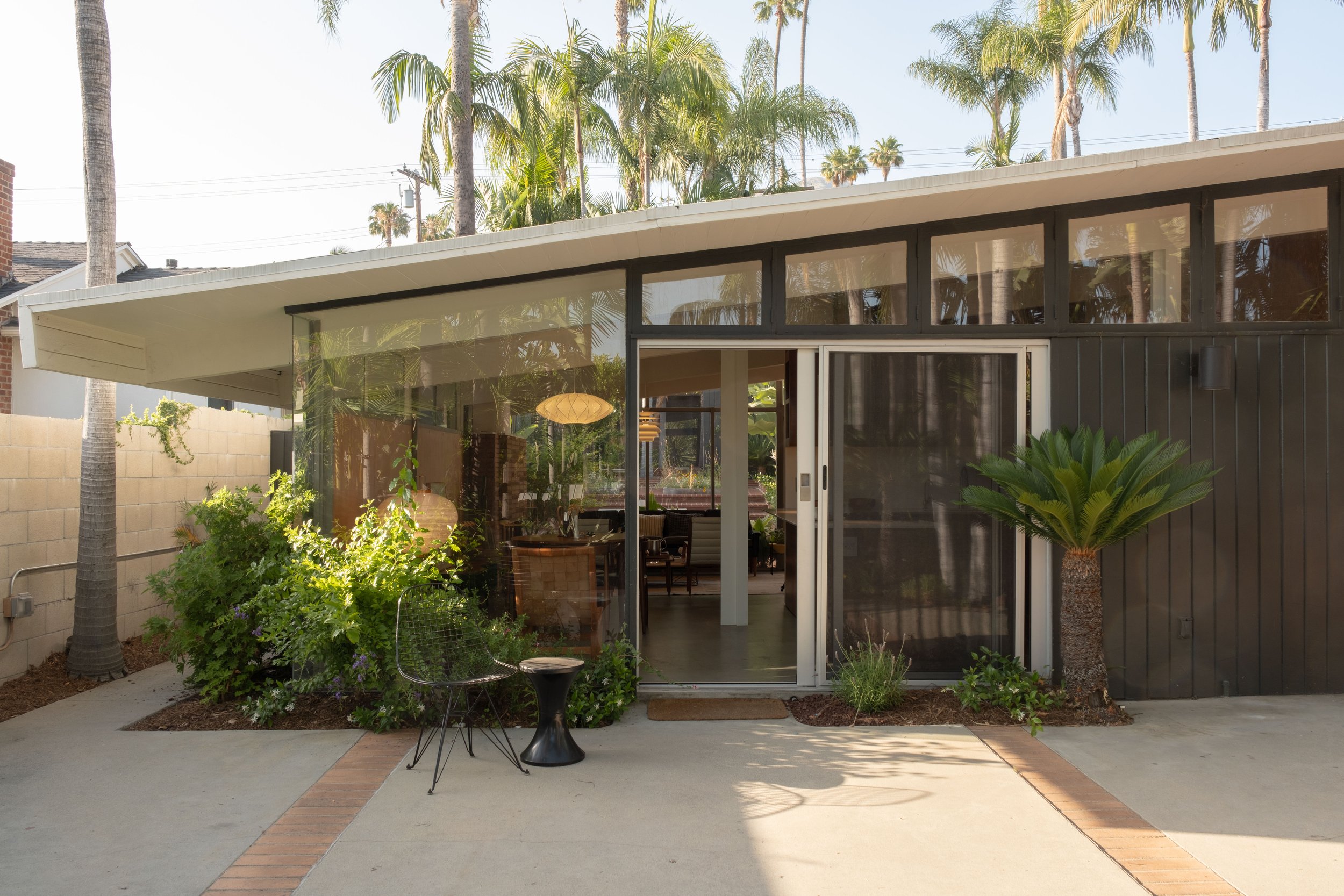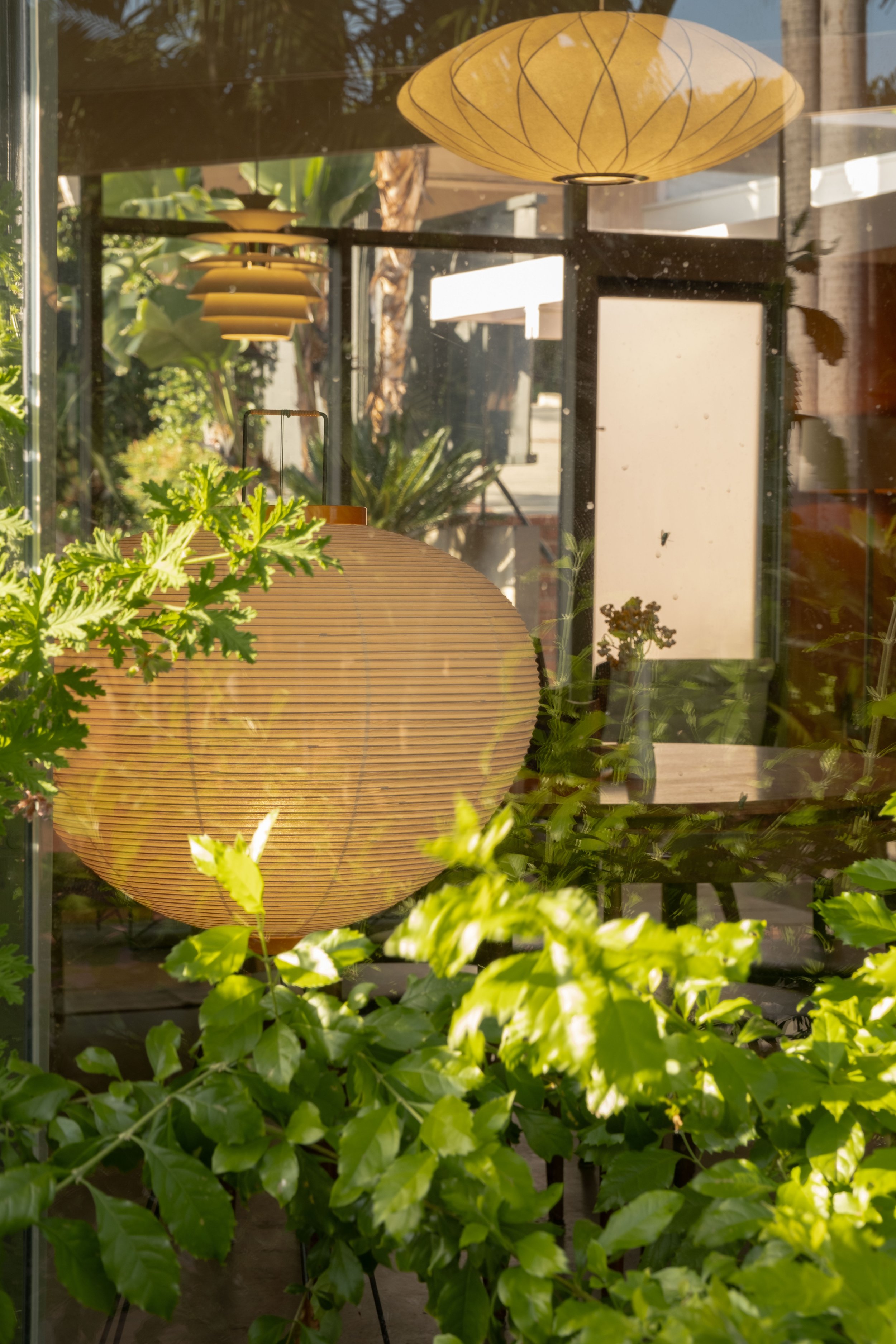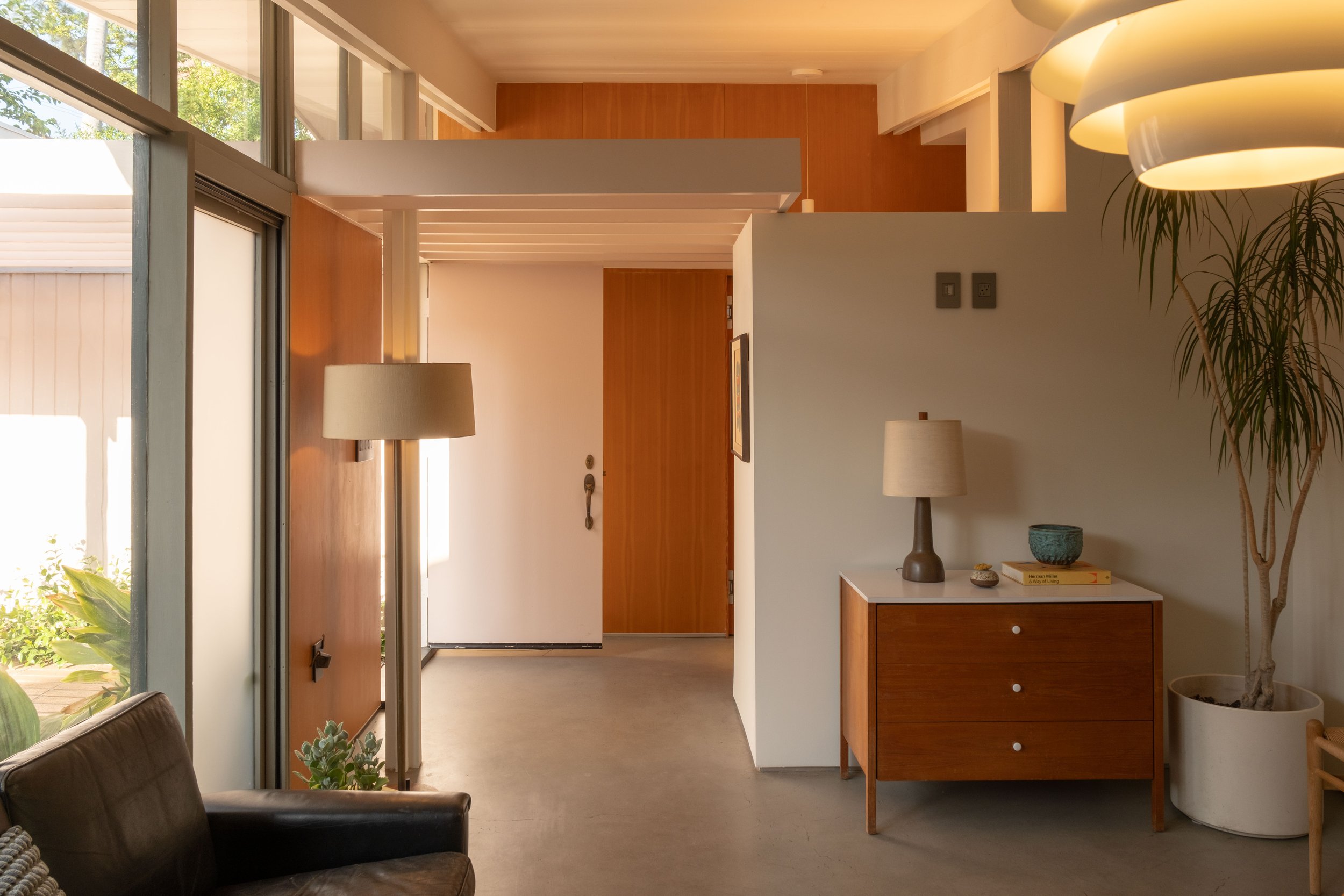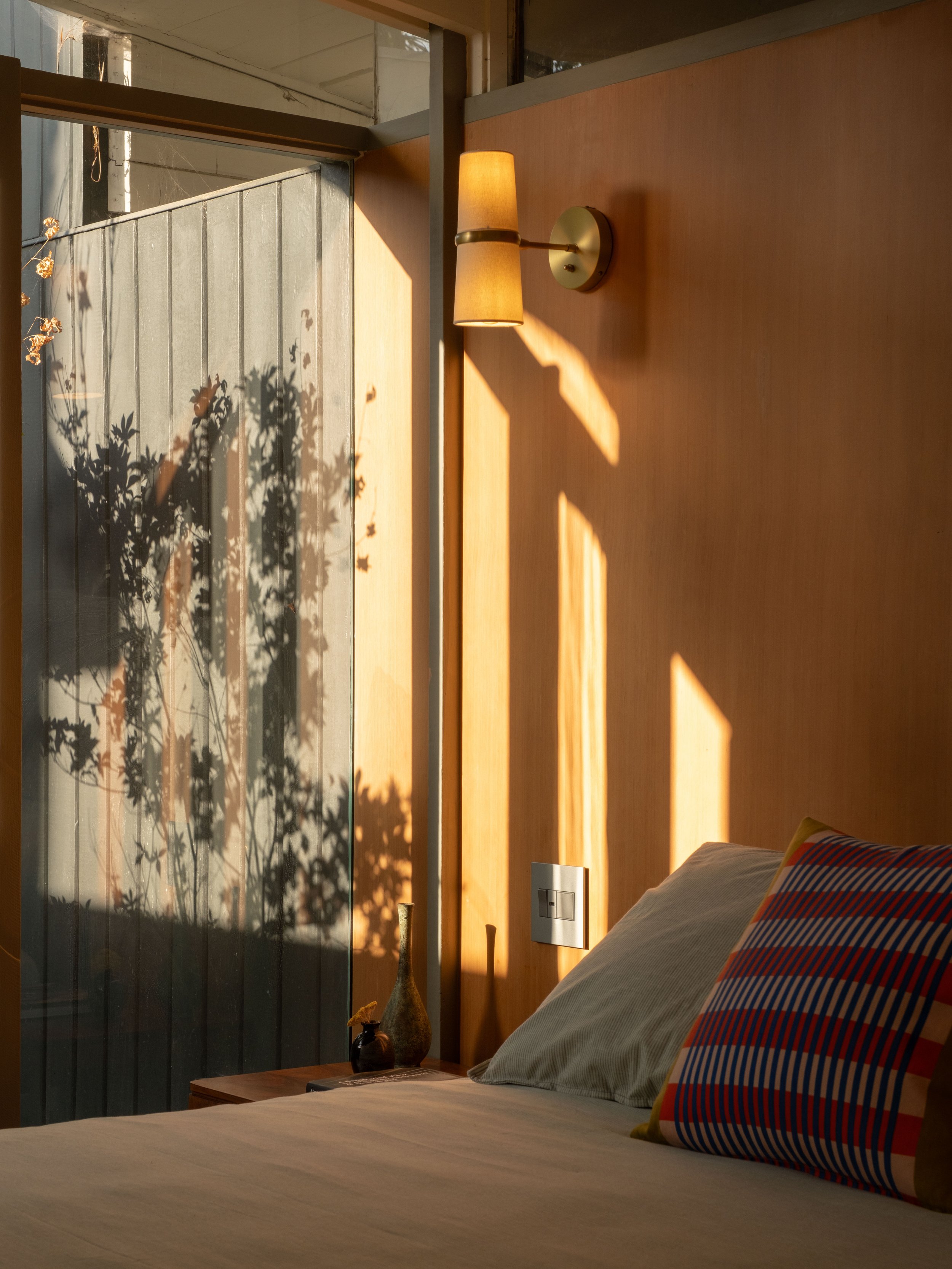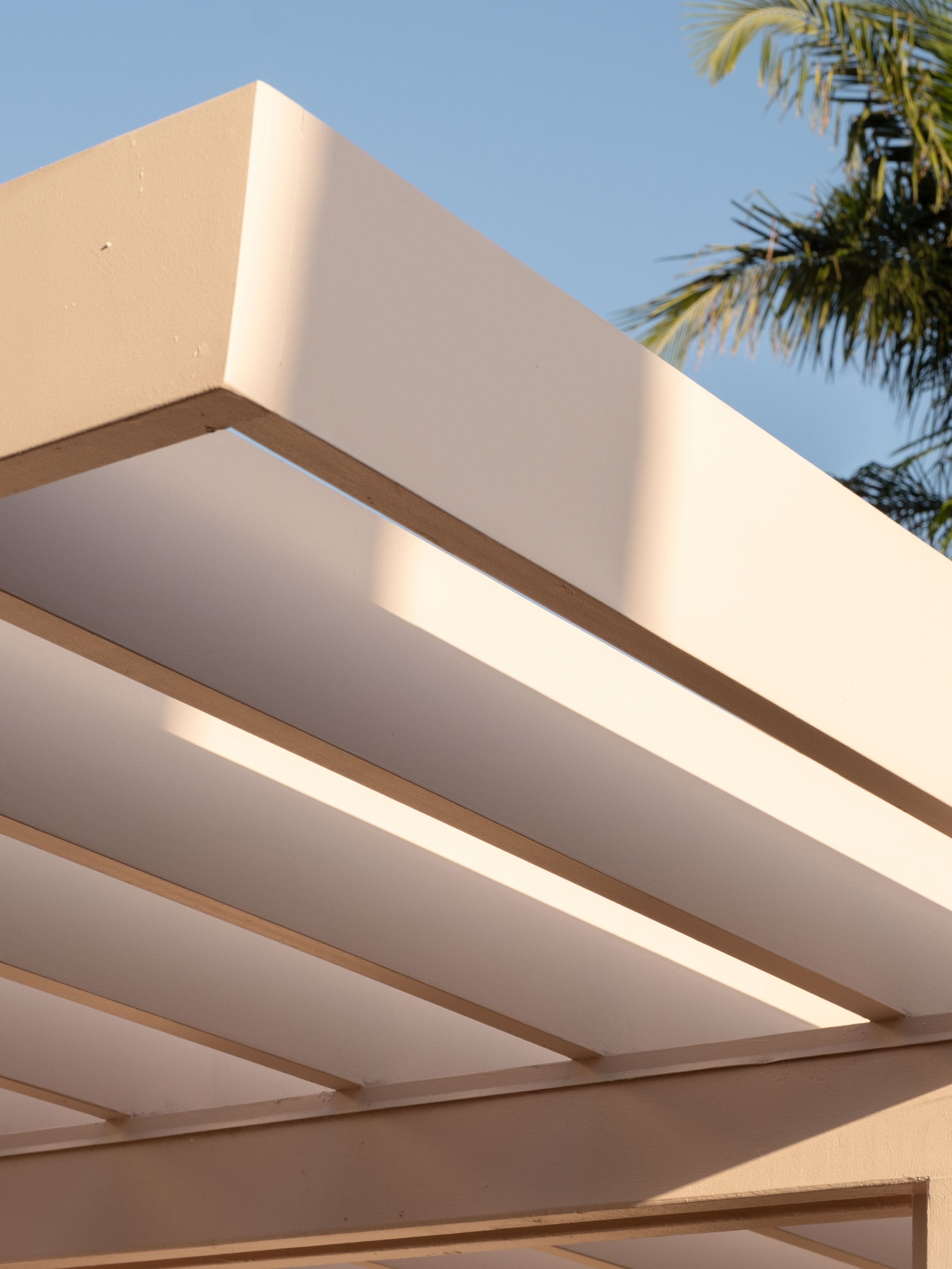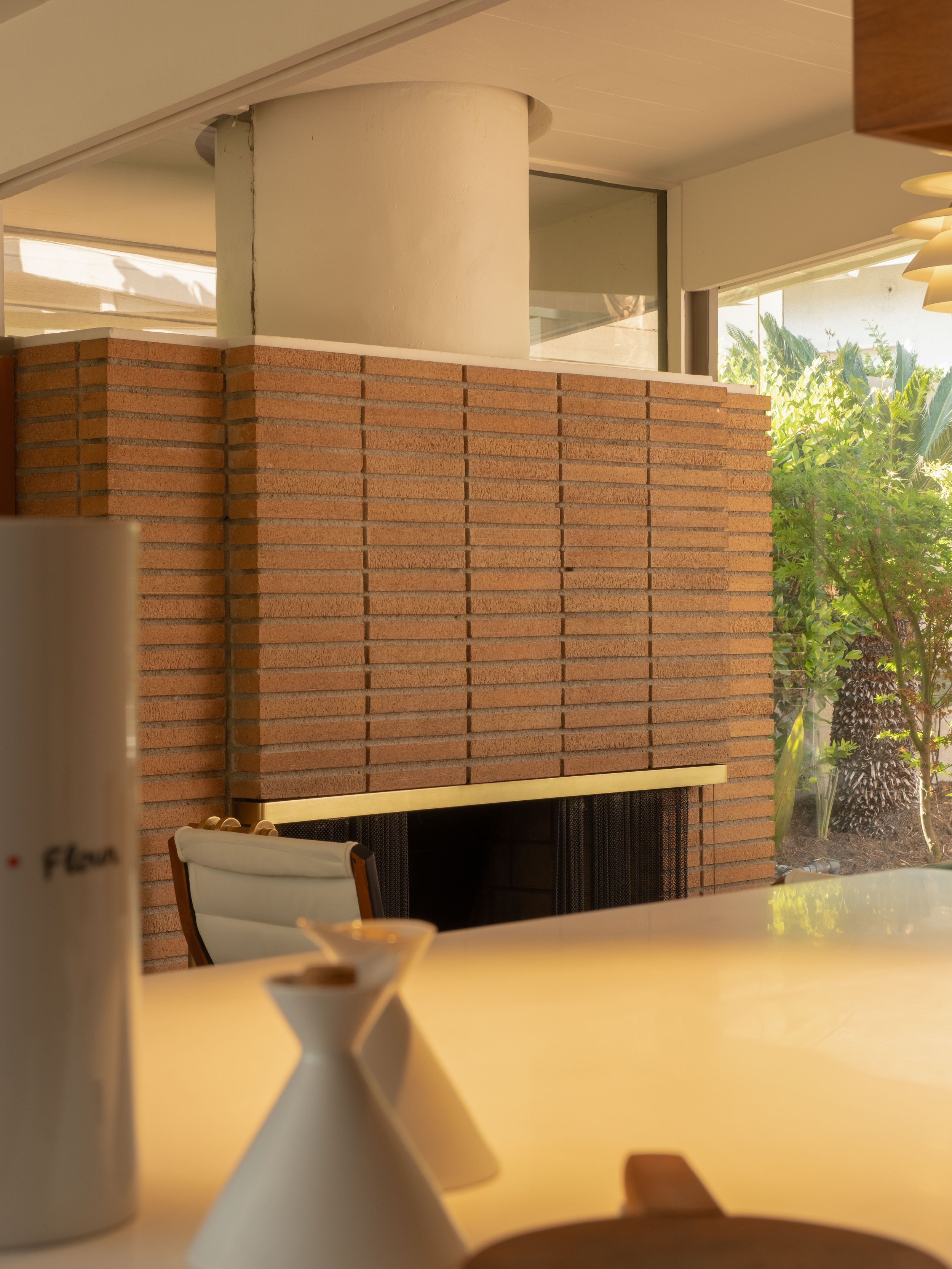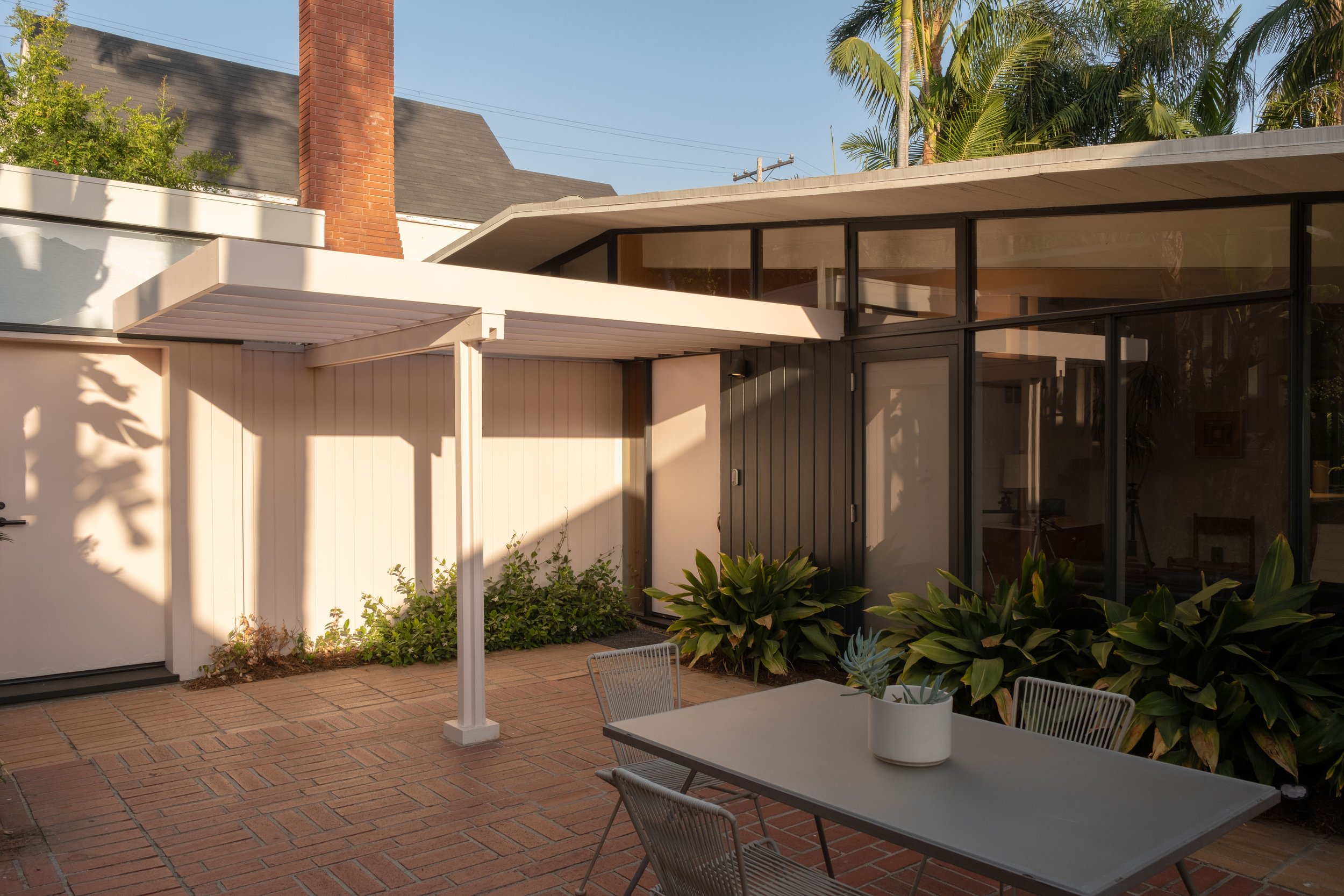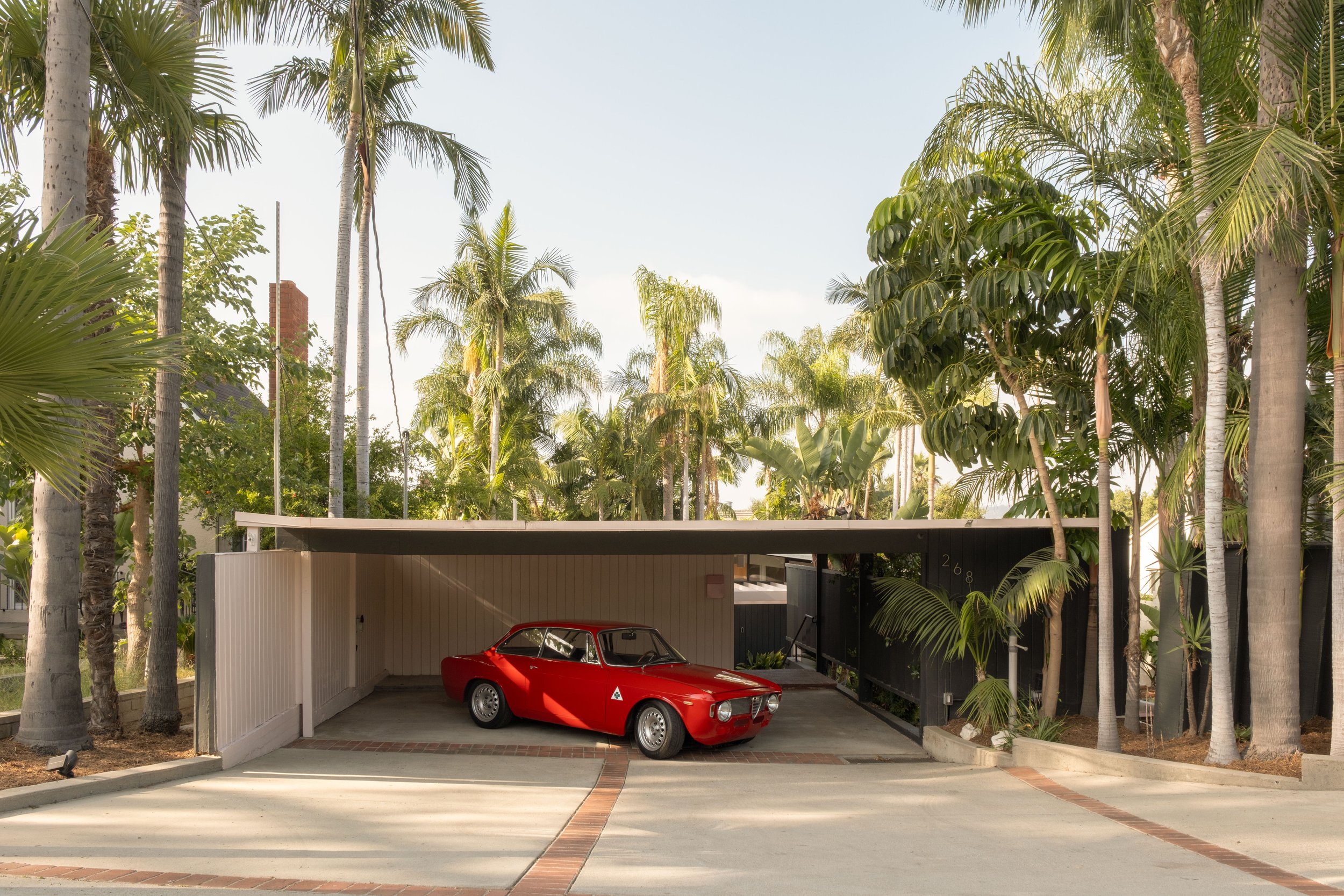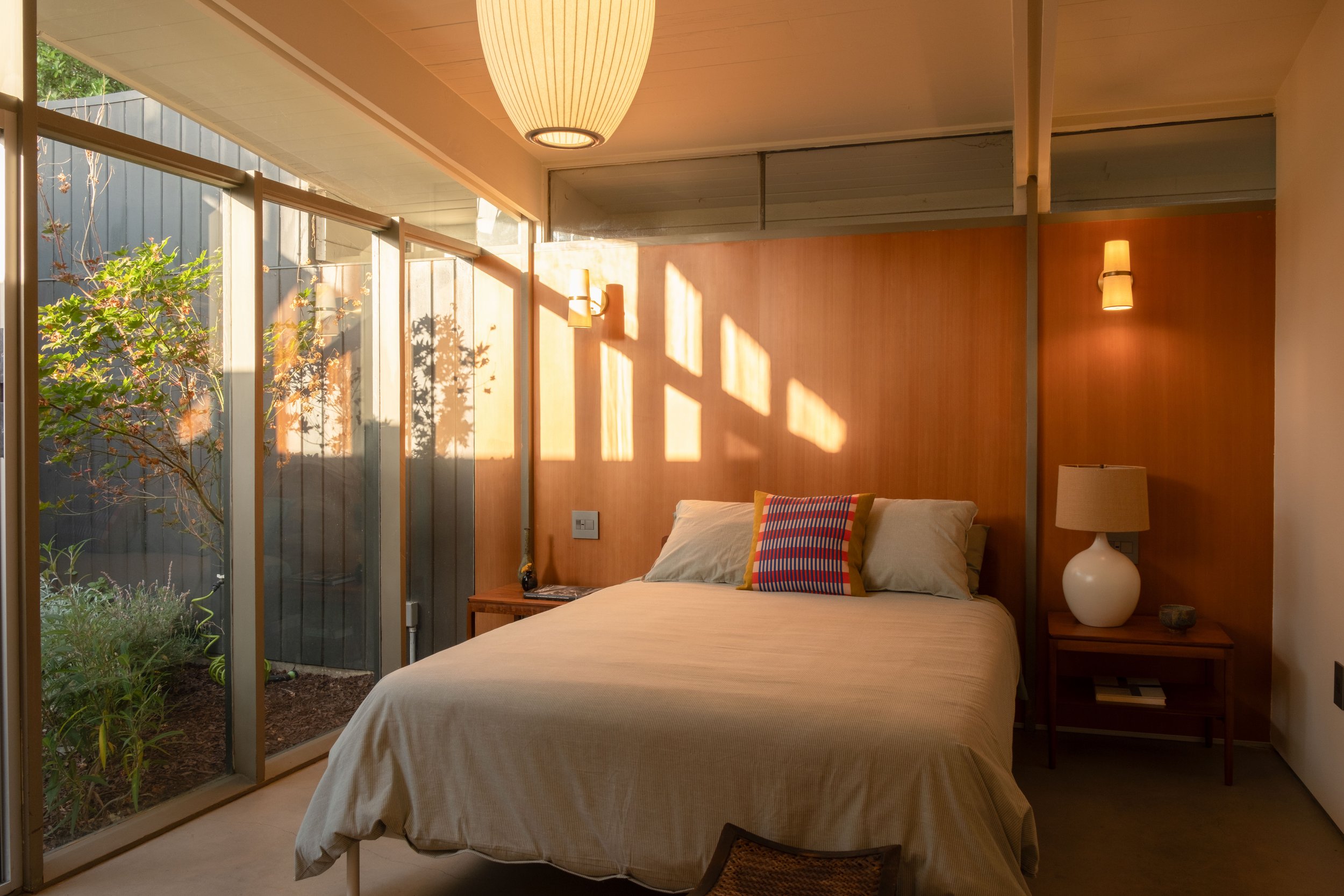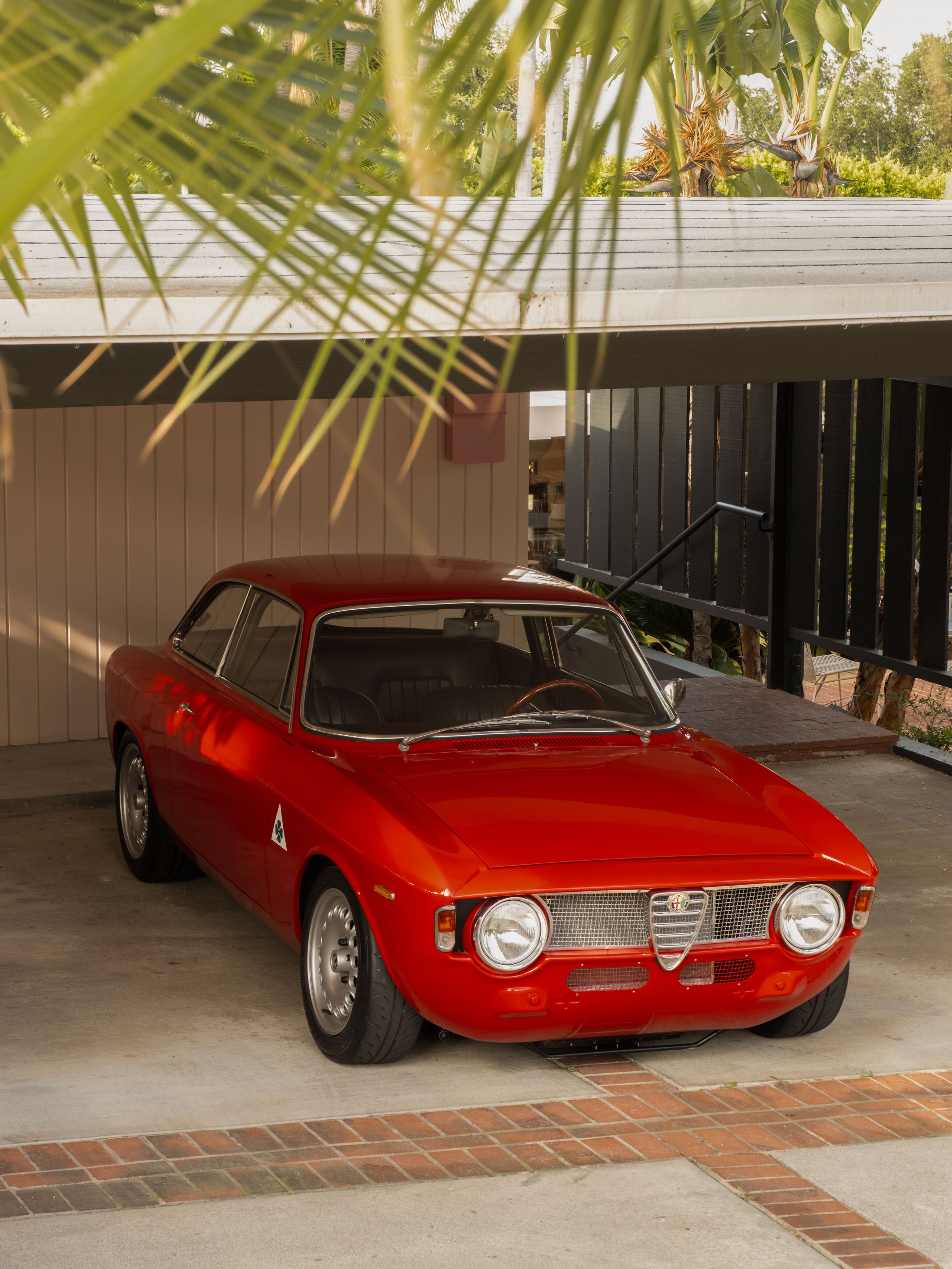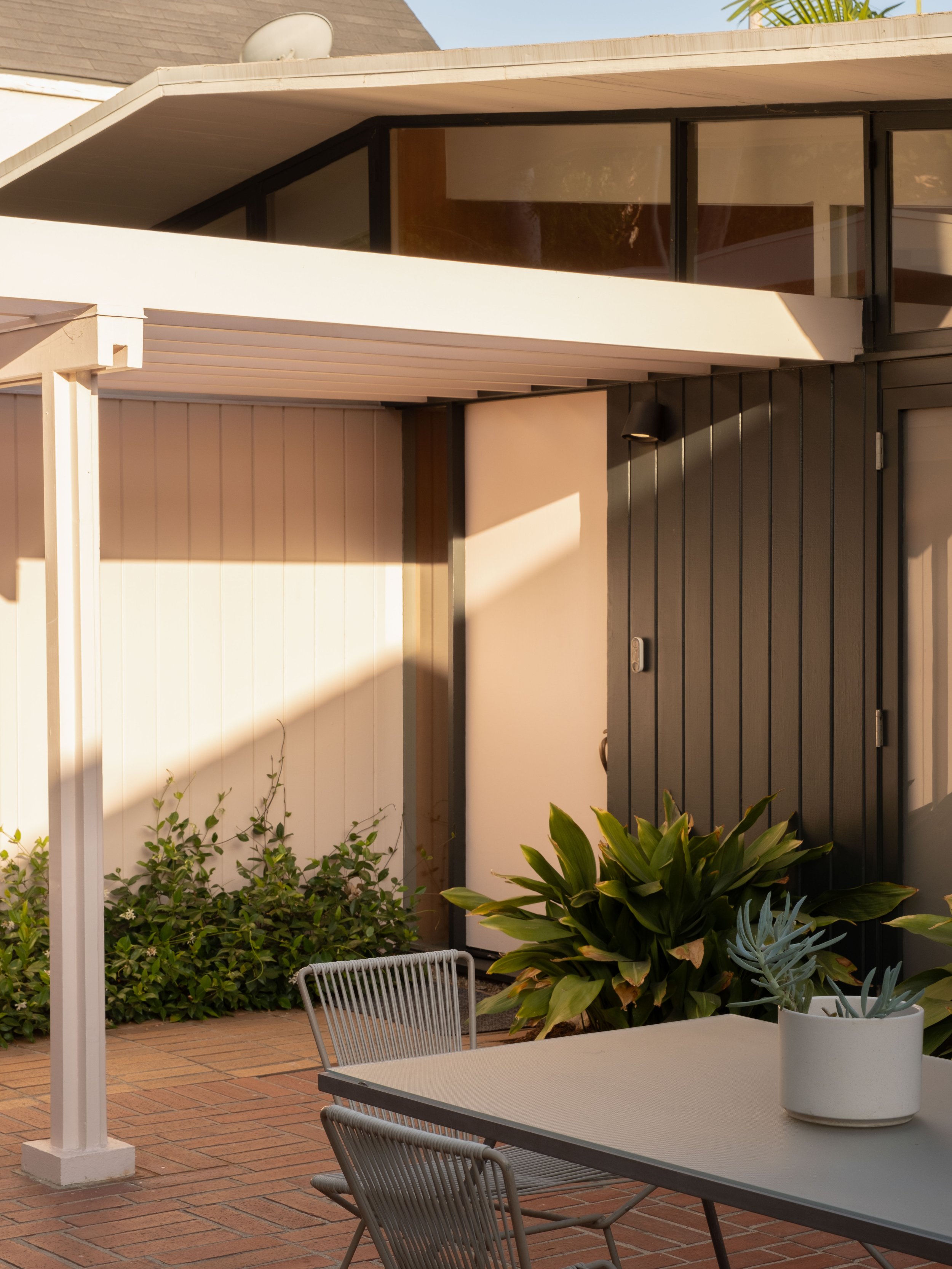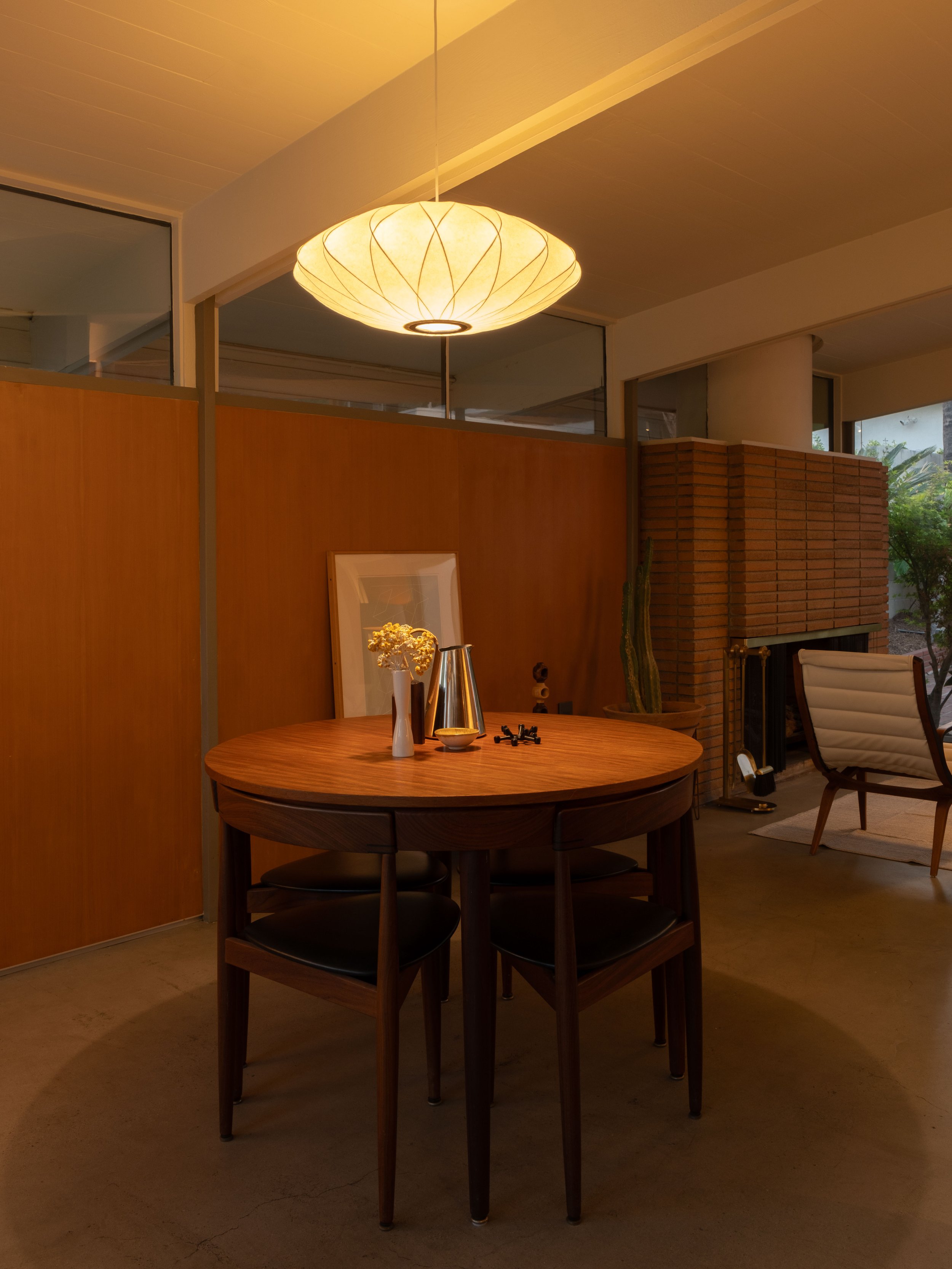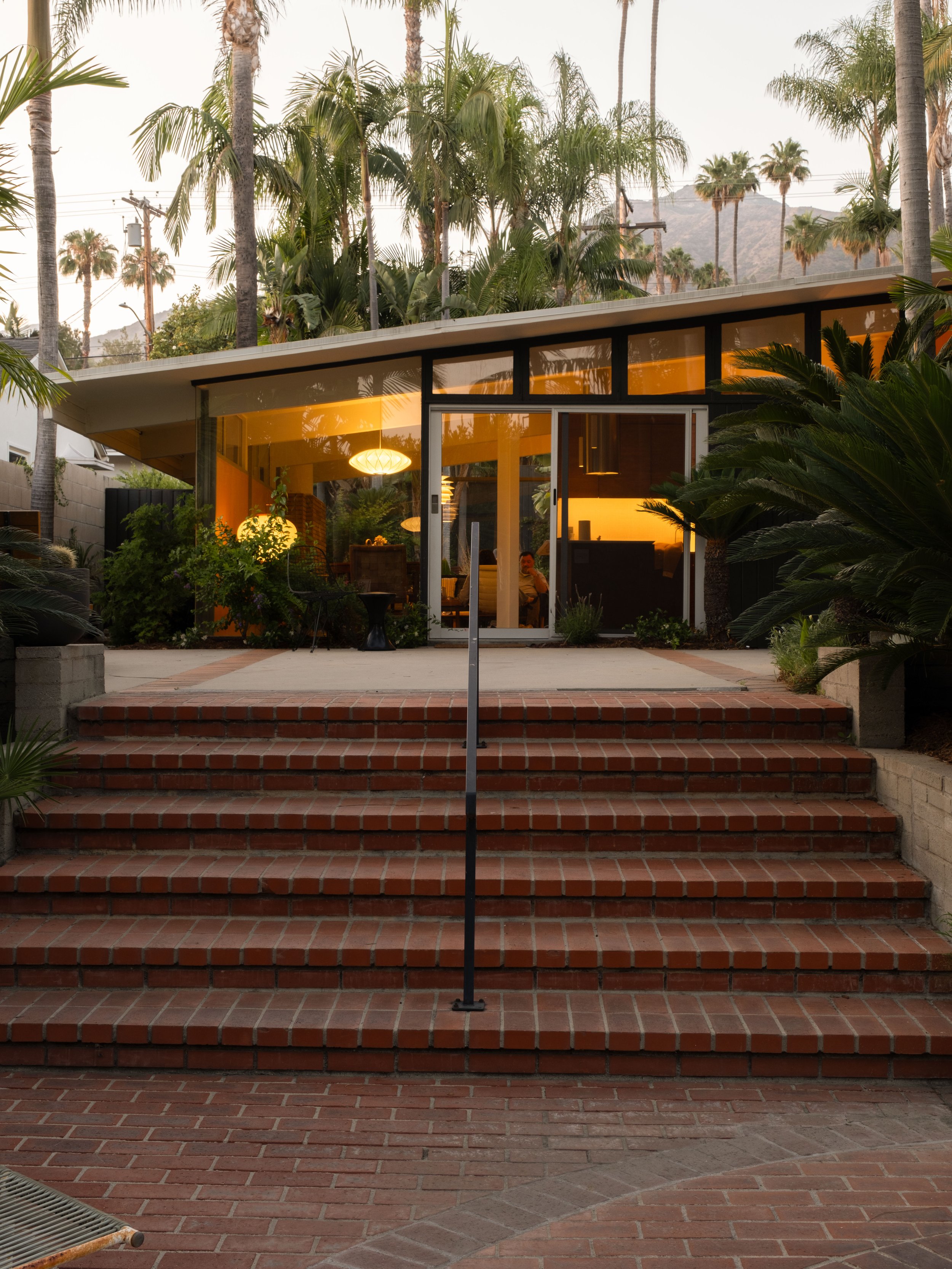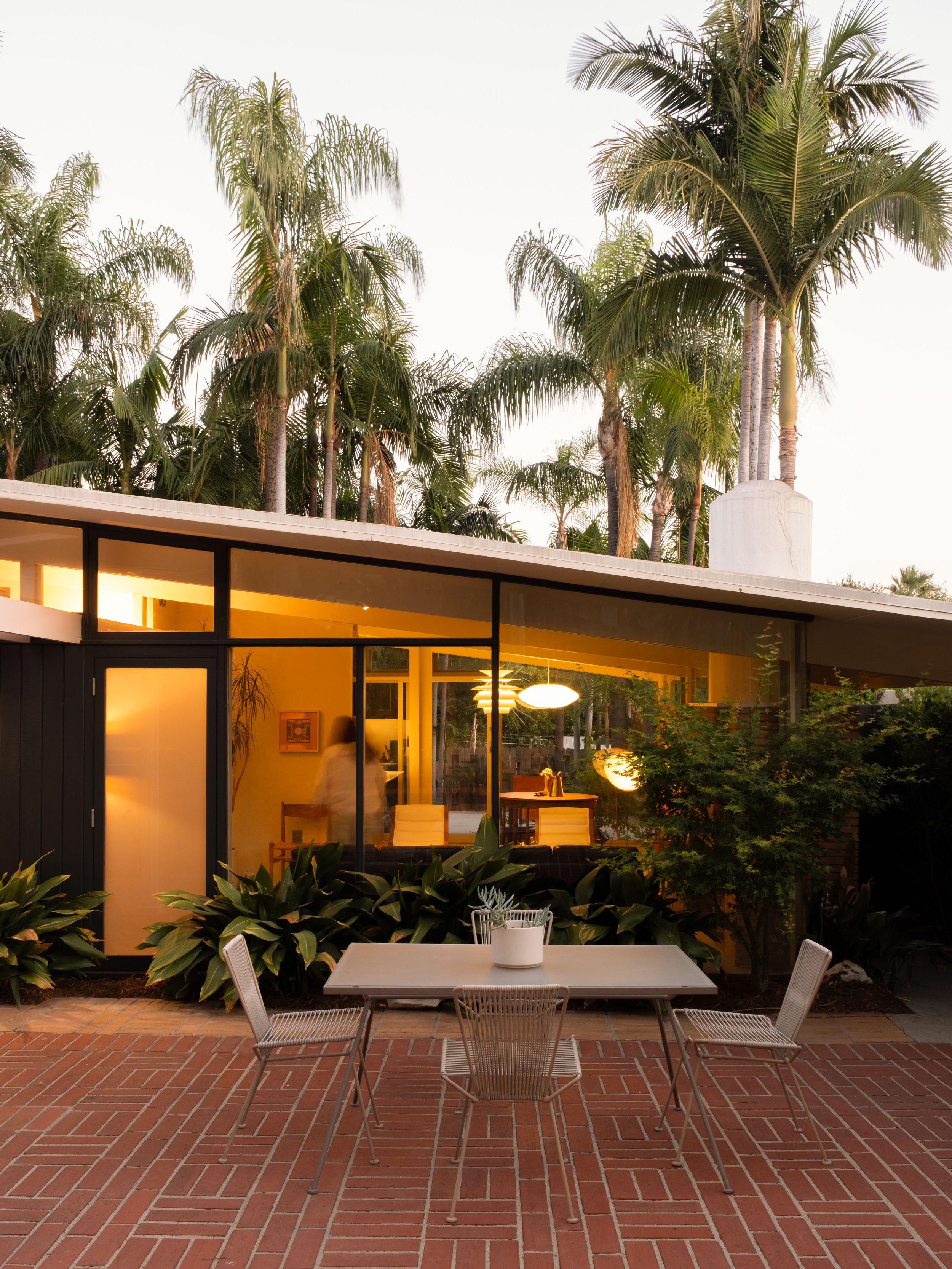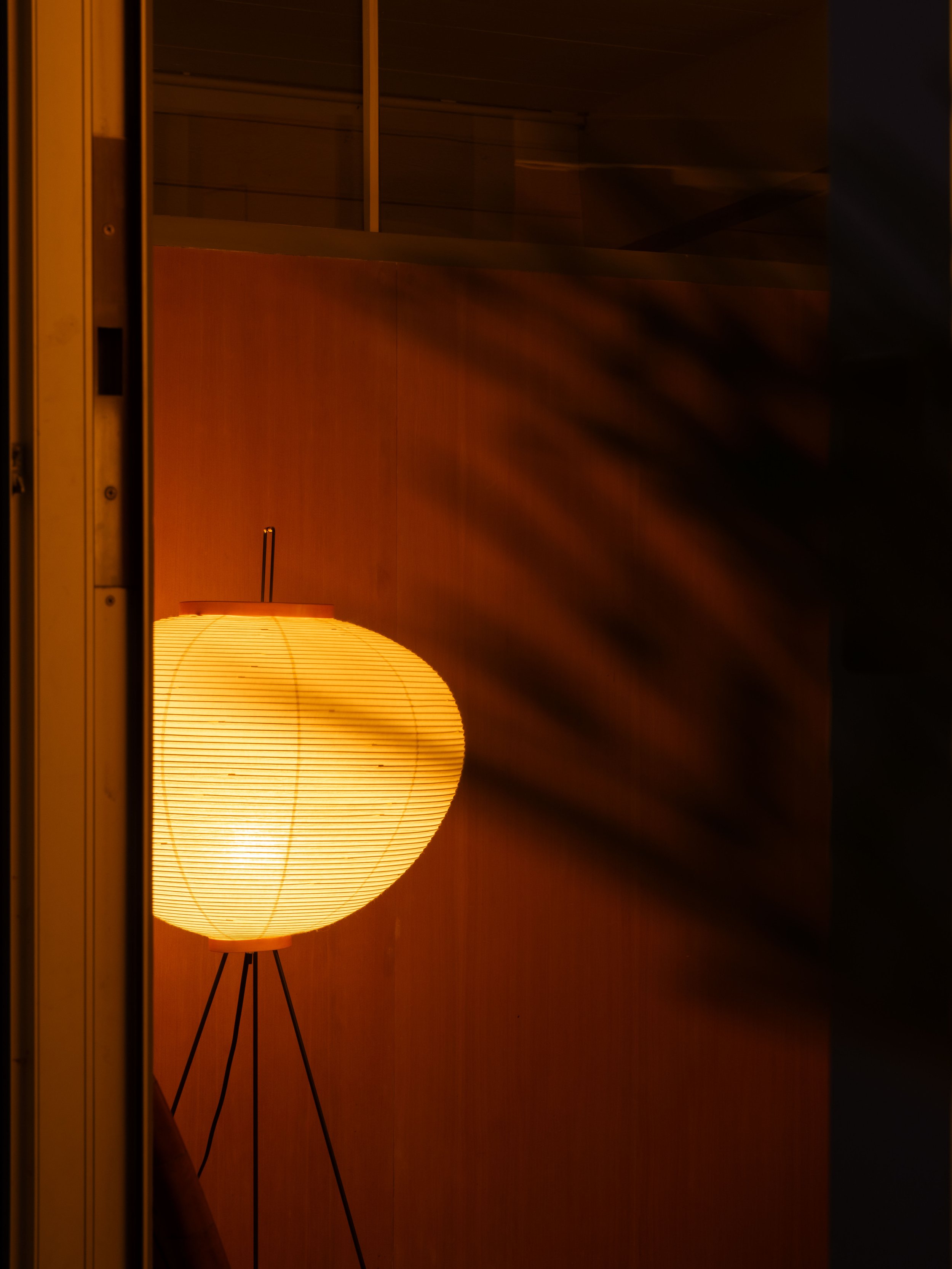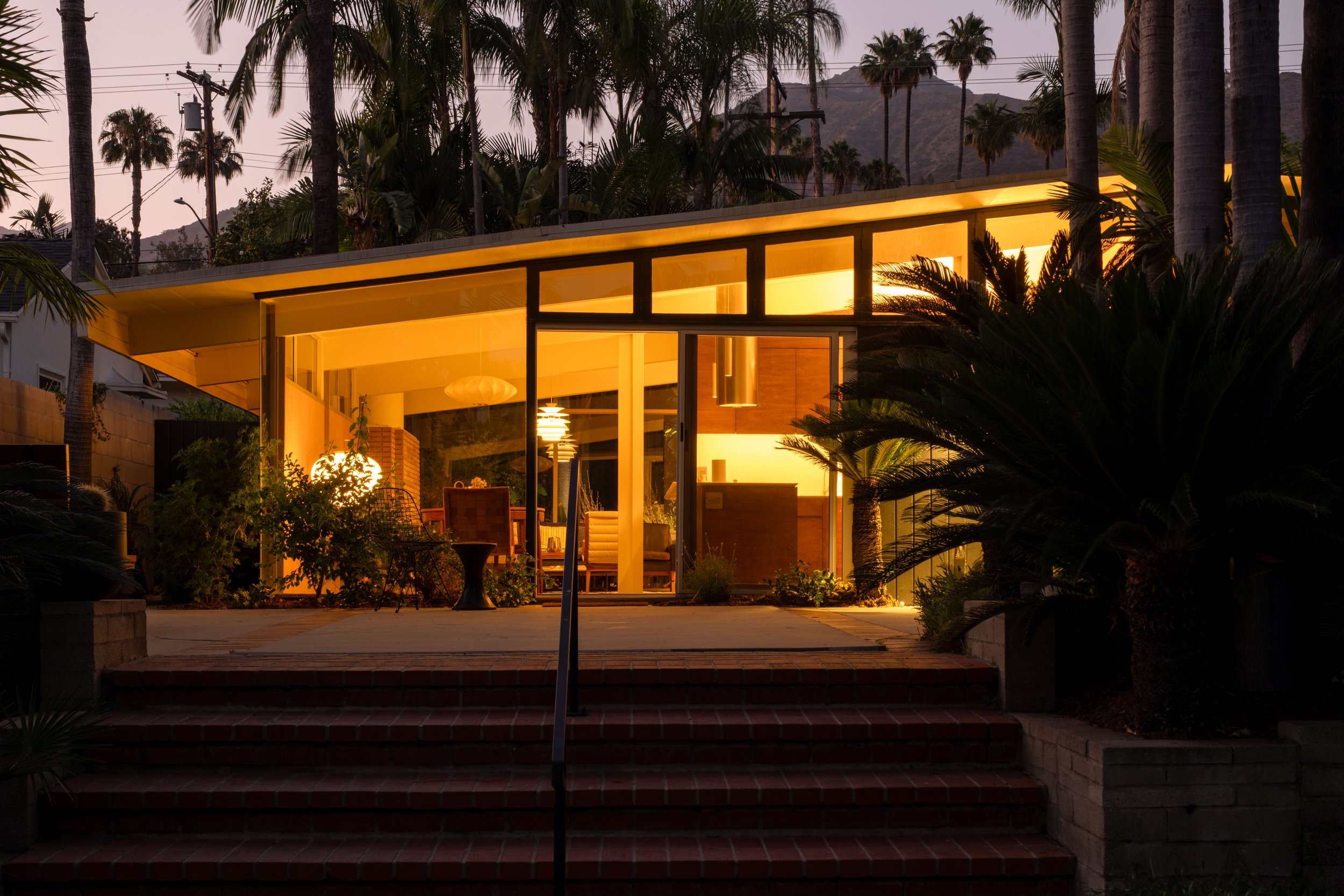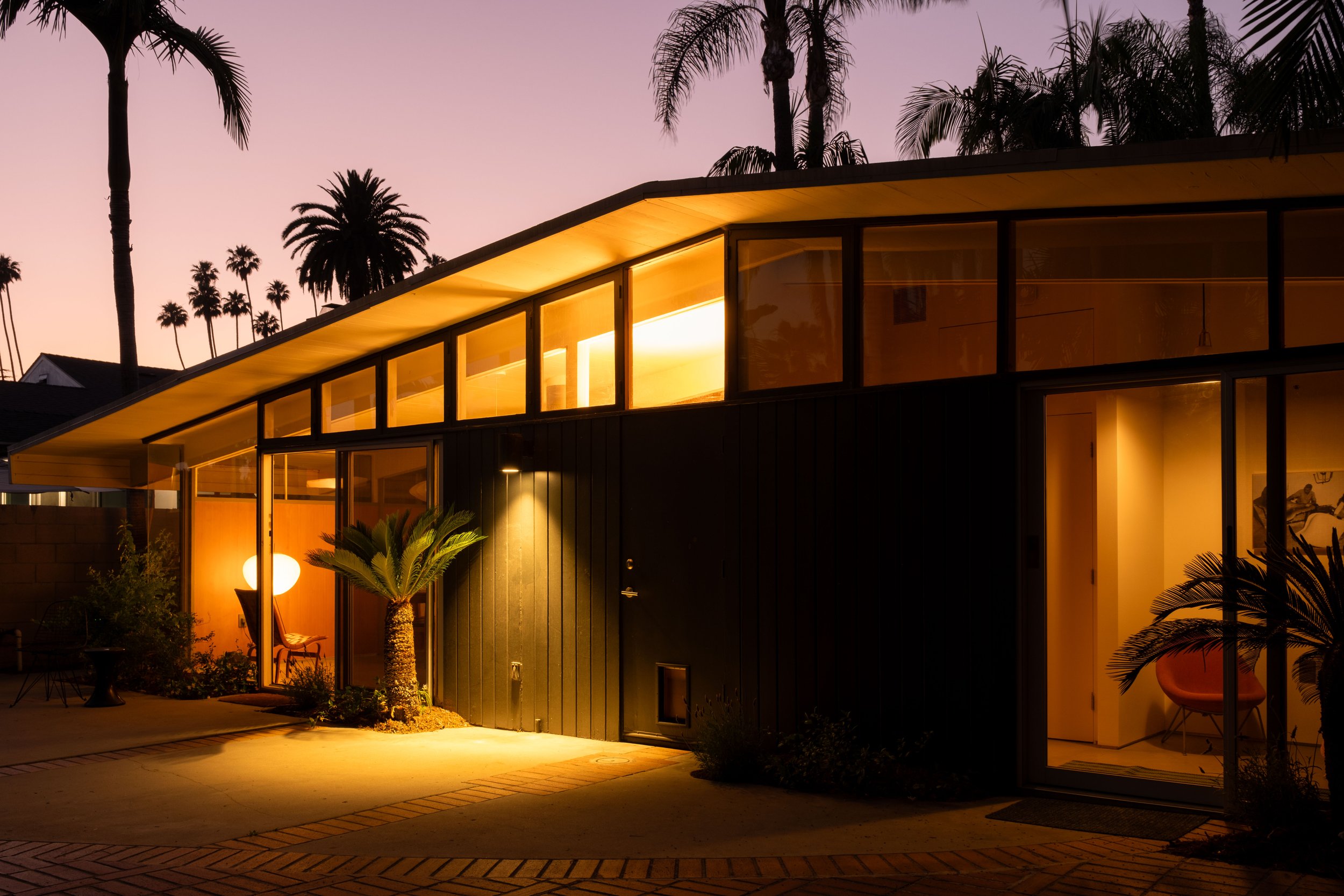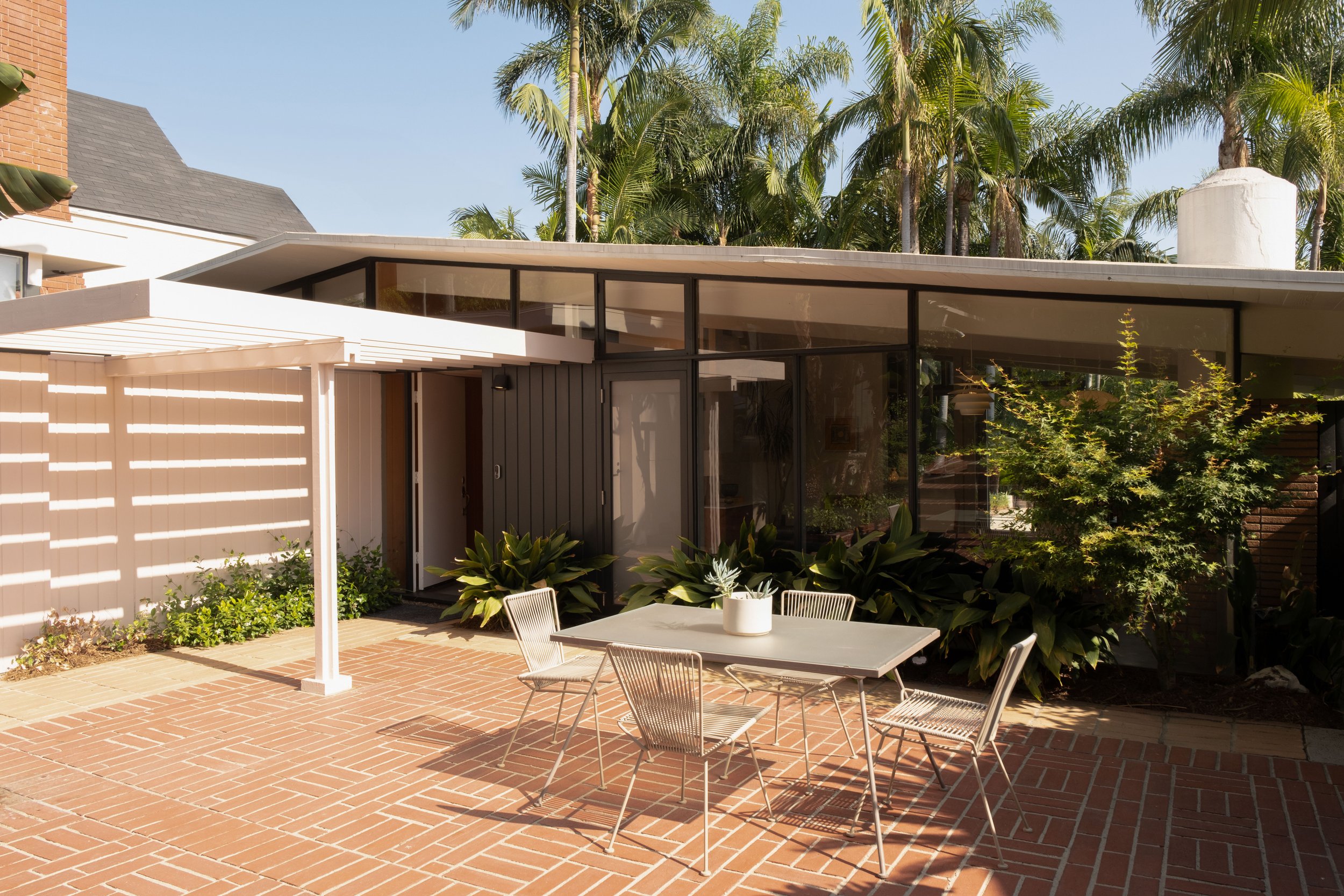The Webber House, A. Quincy Jones, 1950
The Webber House, located in Glendale, California, is a rare and refined example of postwar modernist residential design by architect A. Quincy Jones. Built in 1950 for Charles and Elinor Webber, the house was modeled after Jones’s earlier Sun Villa prototype, originally conceived for a planned development in San Diego. The single-story residence exemplifies Jones’s skill in merging sleek International Style geometry with California’s indoor-outdoor lifestyle. Clad in wood and glass, the structure features deep eaves, expansive windows, and a central living space that opens directly to the garden. The home’s modest footprint is amplified by its openness and connection to nature, making it feel both spacious and serene.
The owners Varanad and Zara have carefully maintained its original character while making subtle updates to preserve the integrity of the home with Architecture firm Claret Cup. Living in the home for 6 years prior to undertaking any renovations or upgrades, Varanad and Zara really got to appreciate the home and understand its significance which they believe played a big role in them saving the home rather than just tearing away all of its history. Inside, the house reflects Jones’s interest in flexible, livable spaces. Built-in cabinetry, exposed post-and-beam construction, and polished concrete floors give the interiors a modern but welcoming feel. A large brick fireplace anchors the main living area, while clerestory windows allow soft light to filter throughout the day. Much like his work for developer Joseph Eichler, Jones designed the Weber House with an emphasis on efficiency, elegance, and harmony with the landscape. Though modest in scale, the house is a showcase of careful proportions and thoughtful detailing—a hallmark of Jones’s residential work during the early 1950s.
In recent years, the Webber House has seen a resurgence of interest thanks to its architectural pedigree and well-preserved condition. Though privately owned, the residence has been featured in architectural tours and publications, helping to cement its place as one of Glendale’s most important mid-century homes. The Weber House stands today as a quiet yet influential piece of Southern California’s modernist legacy, a reflection of Jones’s enduring belief in honest materials, simplicity, and a life well lived through design.
